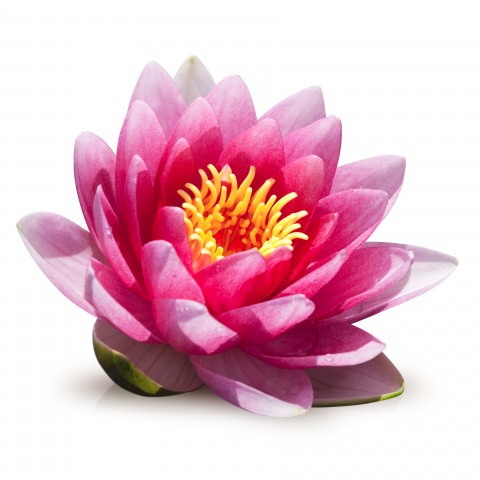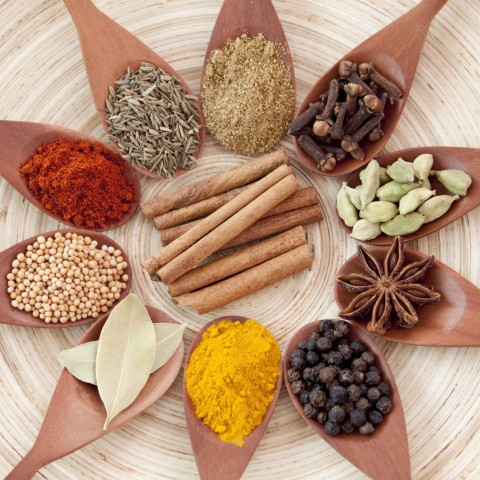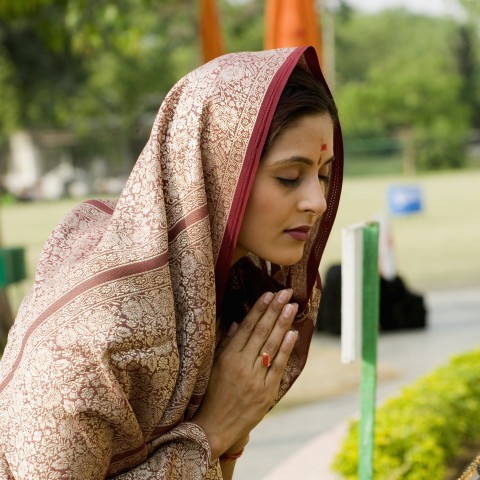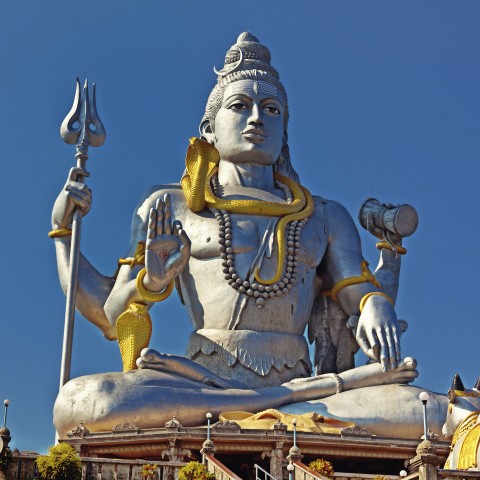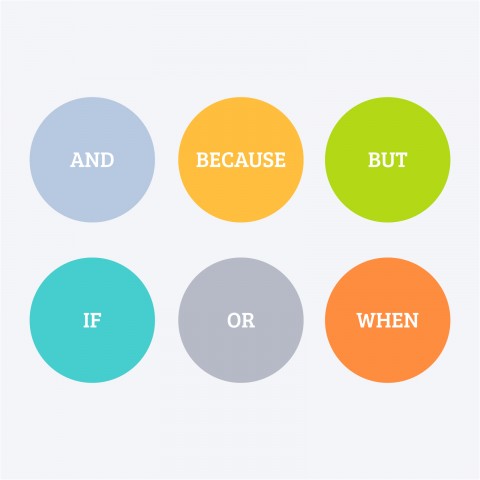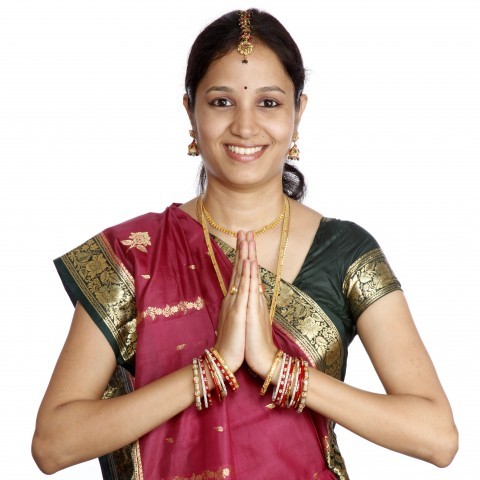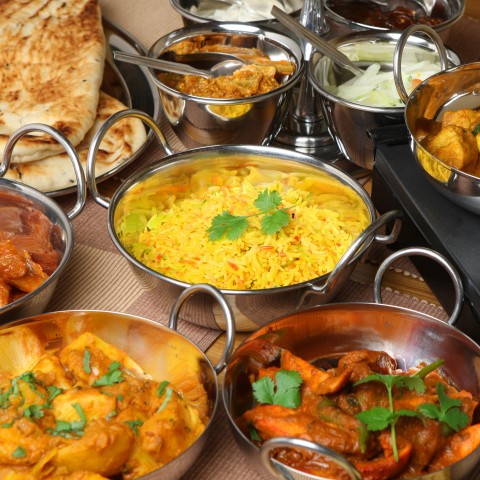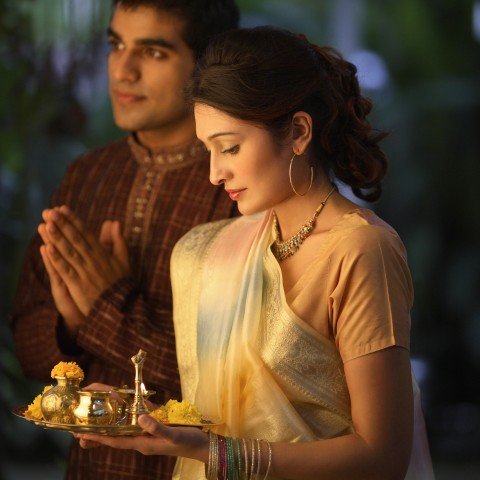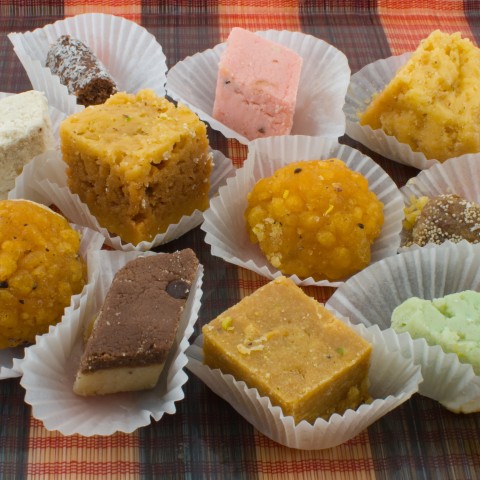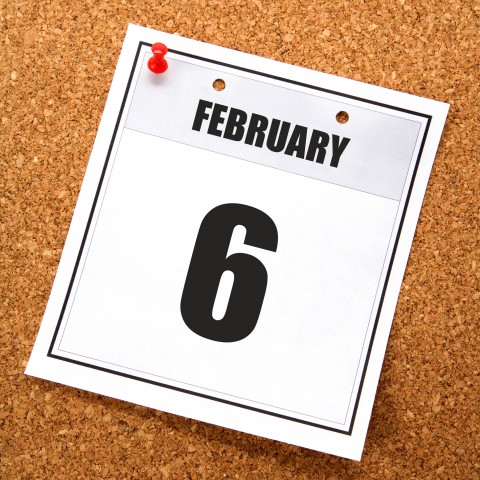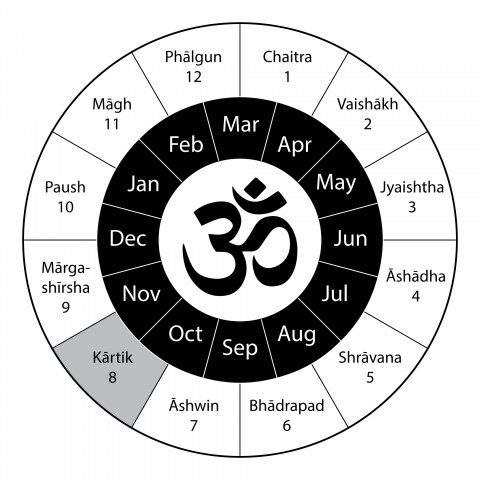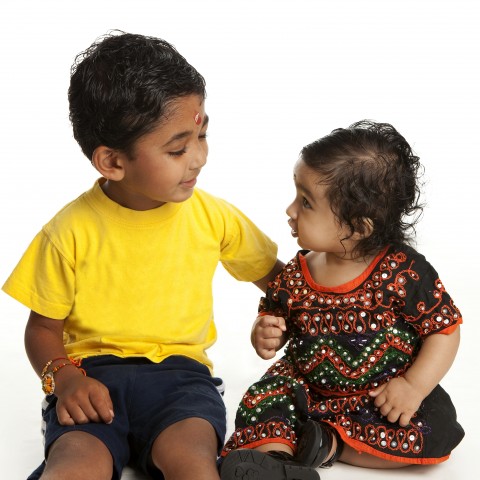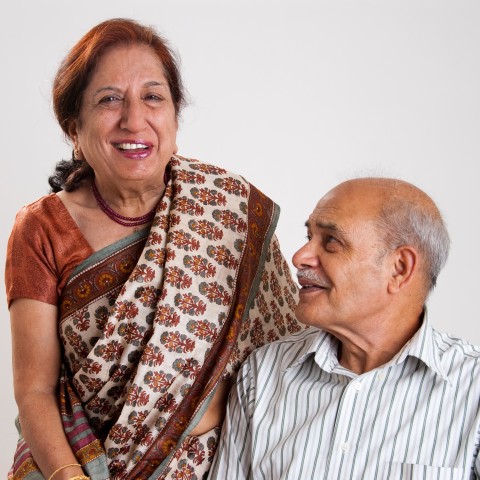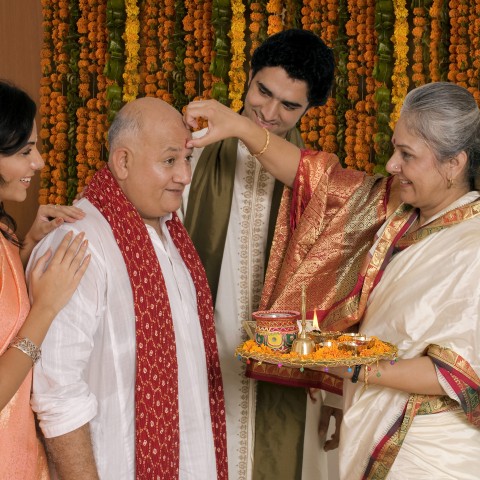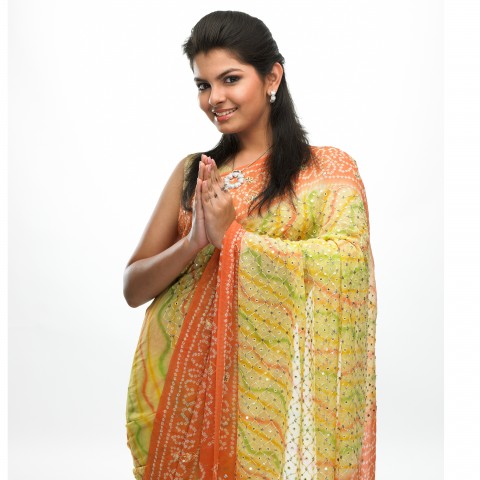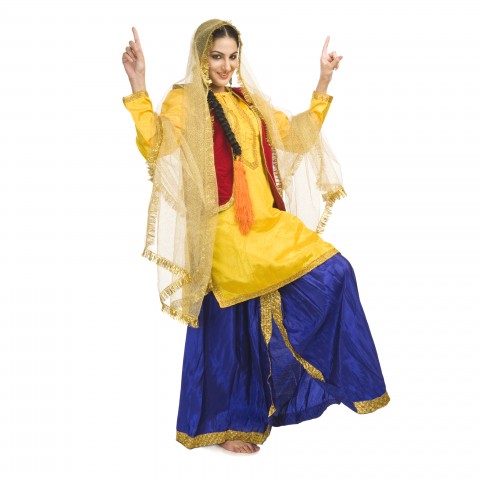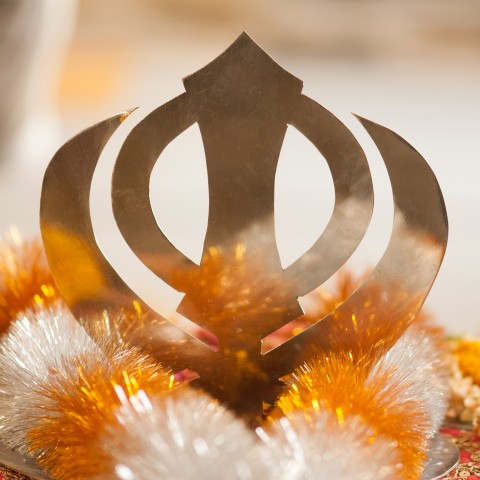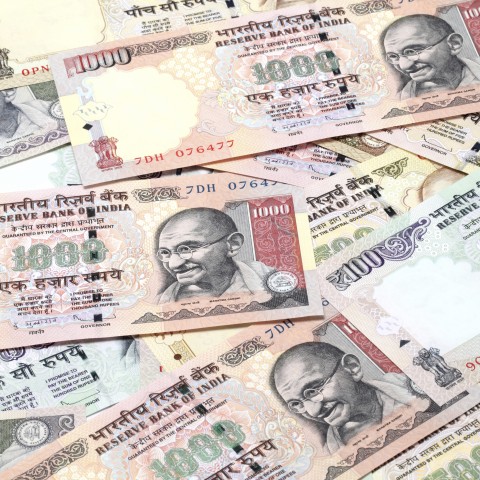Storytelling is something Indians are best at. And that applies to the mundane day-to-day conversations as well. Once you get the sense of how Indian folks talk, you’ll notice that they abundantly use descriptive words in Hindi. The reason being, it adds lots of drama and spice to their chitchats. Thanks to the adjective description in Hindi, even the simplest of tittle-tattle is never dull. By learning adjectives in Hindi grammar, you can become a part of this too!
On a similar note, the local people are generously expressive, too. That’s why, if you wish to gel with them, a basic knowledge of common Hindi adjectives can transform your speech and make you sound like a native. Learning the proper use of Hindi adjectives is easier than you may imagine, and HindiPod101 aims to make its Hindi adjectives lessons fun and simple! So, let’s get going.

- Definition of Adjective & Meaning in Hindi
- Examples of Adjective Sentences in Hindi
- Types of Adjective in Hindi Grammar
- How to Use Masculine and Feminine Adjectives
- Adjective Words List in Hindi
- Widen Your Hindi Learning Scope with HindiPod101
1. Definition of Adjective & Meaning in Hindi
First things first. Let’s start with the adjective definition, and examples in Hindi.
An adjective is a word that describes the quality of a noun. In Hindi, it is known as विशेषण (visesan).
Before we set out to learn Hindi adjectives & their examples, it’s important to study the correct process of using these common Hindi adjectives.
2. Examples of Adjective Sentences in Hindi
In English, we place the adjective first, which is then followed by the noun in a sentence. For instance, “tasty fruit” (adjective + noun).
But when this same phrase is put into a proper sentence, the noun and adjective change their positions while the helping verb comes in between: “The fruit is tasty,” (noun + be verb + adjective).
However, in the following Hindi adjectives examples, this process is a little different than how it is in English.
In Hindi grammar, adjectives precede the noun in phrases.
For instance,
- नीला आकाश (NiiLaa aakaas) = “blue sky” [adjective + noun]
- And छोटा कमरा (chotaa kamaraa) = “small room” [adjective + noun]
In case of a complete sentence though, the adjective and noun change places but there’s no helping verb in the middle. Instead, the “be” verb comes at the end of the sentence.
For instance:
- खाना (noun) गरम (adjective) है। (khaaNaa garam hai.) = “The food is warm.”
- And यह बग़ीचा (noun) सुन्दर (adjective) है। (yah bagiicaa SuNDar hai.) = “This garden is beautiful.”
The difference between adjectives and adverbs is that an adjective tells the quality of a noun, whereas an adverb describes the quality of the verb. Understanding this crucial difference between adjectives and adverbs will save you from so much potential confusion and also sharpen your language skills.
3. Types of Adjective in Hindi Grammar
In order to learn Hindi adjectives more effectively, one must study and thoroughly explore the four types of adjectives in Hindi.
1- Qualitative Adjectives
As the name suggests, this group of words comprises of the adjective of quality in Hindi. These qualitative adjectives can describe the following:
- Negative or positive personality traits
- Shapes
- Placement of things
- Colors
- Smells
Example:
-
ऊपर (uupar) vs. नीचे (Niice) = “up vs. down”
अमीर (amiir) vs. ग़रीब (ġariib) = “rich vs. poor”
2- Quantitative Adjectives
These tells us about the definite and indefinite quantity of nouns.
Example:
-
दो दर्जन केले (Do DarjaN keLe) = “Two dozen bananas”
कई तारे (kaii Taare) = “Many stars”
3- Numeral Adjectives
It will be much quicker to learn Hindi adjectives in this category if you’ve already gone through our article on Hindi Counting. Basically, these types of adjectives point to the specific number of nouns.
Example:
-
चार कमरे (caar kamare) = “Four rooms”
पचास फूल (pacaaS phuuL) = “Fifty flowers”
4- Demonstrative Adjectives
These descriptive words in Hindi stand for pronouns that show their relationship with a particular noun.
Example:
-
मेरी कलम (merii kaLam) = “My pen”
उसकी किताब (uSakii kiTaab) = “His / her book”
4. How to Use Masculine and Feminine Adjectives
Now that you’re well aware of the adjective definition and examples in Hindi, there’s another significant point that’s worth mentioning.
Hindi is a language in which nouns are basically divided into masculine and feminine genders. So, when the need arises to convert a noun to an adjective in Hindi, it has to be done gender-wise too. And we’re going to share with you the best and most useful tip here.
1- Masculine Adjectives
For adjectives referring to masculine nouns, the adjective description in Hindi usually ends with the sound aa.
Such as:
-
लंबा आदमी (Lambaa aaDamii) = “A tall man”
सस्ता फल (SaSTaa phaL) = “Cheap fruit”
नीला आसमान (NiiLaa aaSamaaN) = “Blue sky”
2- Feminine Adjectives
For adjectives referring to feminine nouns, the adjective description in Hindi usually ends with the sound ii.
Such as:
-
लंबी औरत (Lambii auraT) = “A tall woman”
सस्ती सब्ज़ी (SaSTii Sabzii) = “Cheap vegetable”
नीली किताब (NiiLii kiTaab) = “Blue book”
3- Gender-neutral Adjectives
For adjectives referring to gender-neutral nouns, the descriptive words in Hindi usually end with the sound “-a”. Nonetheless, there can be exceptions.
Examples:
-
ईमानदार (iimaaNaDaar) आदमी (aaDamii) / औरत (auraT) = “An honest man / woman”
सुंदर (SuNDar) लड़की (Ladkii) / लड़का (Ladkaa) = “A beautiful boy / girl”
5. Adjective Words List in Hindi
1- Describing Dimensions, Distance, and Frequency
We’ve brought you the most commonly used adjectives in Hindi to make learning a piece of cake for you. Let’s start with these adjectives, which tells us about the shape, size, and frequency of a noun.
| Adjective / Antonym | English Meaning | Example Phrase | English Meaning |
|---|---|---|---|
| छोटा (chotaa) vs बड़ा (badaa) |
“Small” vs “Big” |
एक छोटा कमरा (ek chotaa kamaraa) vs एक बड़ा हाथी (ek badaa haaTHii) |
“One small room” vs “One big elephant” |
| पतला (paTaLaa) vs चौड़ा (caudaa) |
“Narrow” vs “Wide” |
पतली गली (paTaLii gaLii) vs चौड़ी सड़क (caudii Sadak) |
“A narrow lane” vs “A wide road” |
| लंबा (Lambaa) vs नाटा (Naataa) |
“Tall” vs “Short” |
लंबा लड़का (Lambaa Ladakaa) vs नाटा आदमी (Naataa aaDamii) |
“A tall boy” vs “A short man” |
| भारी (bhaarii) vs हल्का (haLkaa) |
“Heavy” vs “Light” |
भारी पत्थर (bhaarii paTTHar) vs हल्का झोला (haLkaa jhoLaa) |
“A heavy stone” vs “A light bag” |
| ऊँचा (uuncaa) vs नीचा (Niicaa) |
“High” vs “Low” |
ऊँचा पहाड़ (uuncaa pahaad) vs नीची पहाड़ी (Niicii pahaadii) |
“A high mountain” vs “A low hill” |
| दूर (Duur) vs पास (paaS) |
“Far” vs “Near” |
दूर का मंदिर (Duur kaa maNDir) vs पास का ढाबा (paaS kaa dhaabaa) |
“Far away temple” vs “Nearby eatery” |
| कम (kam) / थोड़ा (THodaa) vs ज़्यादा (zyaaDaa) |
“Little” vs “More” |
कम / थोड़ा भोजन (kam / THodaa bhojaN) vs ज़्यादा पानी (zyaaDaa paaNii) |
“Little food” vs “More water” |
| कुछ (kuch) vs कई (kaii) |
“Few” vs “Many” |
कुछ सिक्के (kuch Sikke) vs कई किताबें (kaii kiTaaben) |
“A few coins” vs “Many books” |
2- Describing Values
Below you’ll find a list of basic Hindi adjectives to express the value of a noun.
| Adjective / Antonym | English Meaning | Example Phrase | English Meaning |
|---|---|---|---|
| अच्छा (acchaa) vs बुरा (buraa) |
“Good” vs “Bad” |
अच्छा दोस्त (acchaa DoST) vs बुरी आदत (burii aaDaT) |
“A good friend” vs “A bad habit” |
| बेहतरीन (behaTariiN) vs ख़राब (kharaab) |
“Exceptional” vs “Awful” |
बेहतरीन संगीत (behaTariiN SangiiT) vs ख़राब लिखावट (kharaab Likhaavat) |
“Exceptional music” vs “Awful handwriting” |
| सस्ता (SaSTaa) vs महँगा (mahangaa) |
“Cheap” vs “Expensive” |
सस्ता खिलौना (SaSTaa khiLauNaa) vs महँगा मकान (mahangaa makaaN) |
“Cheap toy” vs “Expensive house” |
| असली (aSaLii) vs नक़ली (NaqaLii) |
“Original” vs “Fake” |
असली हीरा (aSaLii hiiraa) vs नक़ली चित्र (NaqaLii ciTr) |
“Original diamond” vs “Fake painting” |
3- Describing Feeling & Sense
This sub-category consists of adjective words in Hindi that tell us about the different feelings and sensations related to, but not confined to, physical touch.
For more comprehensive learning, you can also check out our adjective list with Hindi meanings here.
| Adjective / Antonym | English Meaning | Example Phrase | English Meaning |
|---|---|---|---|
| ठंडा (thaNdaa) vs गरम (garam) |
“Chilled” vs “Hot” |
ठंडी शिकंजी (thaNdii sikaNjii) vs गरम सूप (garam Suup) |
“Chilled lemonade” vs “Hot soup” |
| गुनगुना (guNaguNaa) vs जमी हुई (jamii huyii) |
“Lukewarm” vs “Frozen” |
गुनगुना पानी (guNaguNaa paaNii) vs जमी हुई कुल्फ़ी (jamii huyii kuLfii) |
“Lukewarm water” vs “Frozen ice cream” |
| कोमल (komaL) vs कठोर (kathor) |
“Delicate” vs “Tough” |
कोमल पंख (komaL pankh) vs कठोर स्वभाव |
(kathor Svabhaav) “Delicate feather” vs “Tough nature” |
| दर्दनाक (DarDaNaak) | “Painful” | दर्दनाक हादसा (DarDaNaak haaDaSaa) |
“Painful incident” |
4- Describing Human Behaviors and Feelings
This subheading covers the Hindi adjectives that describe people’s behaviors and emotions. These basic Hindi adjectives can help you talk about anyone and everyone!
1) Positive Personality Traits in Hindi
First we’ll begin with words for positive personality traits in Hindi. Do you know any Hindi adjectives for “beautiful?” The adjectives for “beautiful” in Hindi are ख़ूबसूरत (khuubaSuuraT) and सुंदर (SuNDar).
Check out this amazing Hindi adjectives list and find out the most suitable personality word for yourself!
| Positive Adjectives | English Meaning | Example Phrase | English Meaning |
|---|---|---|---|
| दयालु (DayaaLu) | “Kind” | दयालु राजा (DayaaLu raajaa) | “Kind ruler” |
| ख़ुशमिज़ाज (khusamizaaj) | “Jolly” | ख़ुशमिज़ाज दोस्त (khusamizaaj DoST) | “Jolly friend” |
| शांत (saaNT) | “Quiet” | शांत लड़की (saaNT Ladakii) | “Quiet girl” |
| उदार (uDaar) | “Generous” | उदार व्यक्ति (uDaar vyakTi) | “Generous person” |
| ईमानदार (iimaaNaDaar) | “Honest” | ईमानदार दुकानदार (iimaaNaDaar DukaaNaDaar) | “Honest shopkeeper” |
| भरोसेमंद (bharoSemaND) | “Trustworthy” | भरोसेमंद नौकर (bharoSemaND Naukar) |
“Trustworthy servant” |
2) Negative Adjective Words List in Hindi
Below is a collection of some negative adjective words in Hindi. Feel free to explore our special lesson material on personality adjectives, too!
| Negative Adjectives | English Meaning | Example Phrase | English Meaning |
|---|---|---|---|
| ग़ुस्सैल (ġuSSaiL) | “Angry” | ग़ुस्सैल अध्यापक (ġuSSaiL aDHyaapak) | “Angry teacher” |
| बातूनी (baaTuuNii) | “Talkative” | बातूनी विद्यार्थी (baaTuuNii viDyaarTHii) | “Talkative student” |
| उदास (uDaaS) | “Sad” | उदास बच्चा (uDaaS baccaa) | “Sad kid” |
| शैतान (saiTaaN) | “Naughty” | शैतान लड़के (saiTaaN Ladake) | “Naughty boys” |
| चालाक (caaLaak) | “Clever” | चालाक लोमड़ी (caaLaak Lomadii) | “Clever fox” |
| मूर्ख (muurkh) | “Dumb” | मूर्ख अधिकारी (muurkh aDHikaarii) | “Dumb officer” |
| चुग़लख़ोर (cuġaLakhor) | “Sneaky” | चुग़लख़ोर पड़ोसी (cuġaLakhor padoSii) | “Sneaky neighbor” |
| निर्दयी (NirDayii) | “Cruel” | निर्दयी राजा (NirDayii raajaa) | “Cruel king” |
| कंजूस (kaNjuuS) | “Miserly” | कंजूस आदमी (kaNjuuS aaDamii) |
“Miserly man” |
5- Describing Levels of Pace & Importance
The difference between adjectives and adverbs in Hindi is tricky. To avoid getting confused with the adverbs, you must pay close attention to these Hindi adjectives examples, which describe the speed and other qualities of nouns.
| Adjective / Antonym | English Meaning | Example Phrase | English Meaning |
|---|---|---|---|
| तेज़ (Tez) vs धीमा (DHiimaa) |
“Fast” vs “Slow” |
तेज़ ख़रगोश (Tez kharagos) vs धीमा कछुआ |
(DHiimaa kachuaa) “Fast rabbit” vs “Slow tortoise” |
| आसान (aaSaaN) vs मुश्किल (muskiL) |
“Easy” vs “Difficult” |
आसान सवाल (aaSaaN SavaaL) vs मुश्किल पहेली (muskiL paheLii) |
“Easy question” vs “Difficult riddle” |
| ज़रूरी (zaruurii) vs मामूली (maamuuLii) | “Important” vs “Ordinary” |
ज़रूरी बैठक (zaruurii baithak) vs मामूली काम (maamuuLii kaam) |
“Important meeting” vs “Ordinary task” |
6- Describing Appearance
1) Shades and Colors
Do you love to talk about colors? Learn the color names and pour your heart out with these mind blowing describing words in Hindi.
| Adjective / Antonym | English Meaning | Example Phrase | English Meaning |
|---|---|---|---|
| गहरा (gaharaa) vs हल्का (haLkaa) |
“Deep” / “Dark” vs “Light” |
गहरी पीली दीवार (gaharii piiLii Diivaar) vs हल्का बैंगनी फूल (haLkaa baingaNii phuuL) |
“Deep yellow wall” vs “Light purple flower” |
| चटख़ (catakh) vs फ़ीका (fiikaa) |
“Bright” vs “Dull” |
चटख़ लाल साड़ी (catakh LaaL Saadii) vs फ़ीका लाल कपड़ा (fiikaa LaaL kapadaa) |
“Bright red saree” vs “Dull red cloth” |
| काला (kaaLaa) vs सफ़ेद (SafeD) |
“Black” vs “White” |
काला मोती (kaLaa moTii) vs सफ़ेद बादल (SafeD baaDaL) |
“Black pearl” vs “White clouds” |
| लाल (LaaL) | “Red” | लाल टमाटर (LaaL tamaatar) | “Red tomato” |
| गुलाबी (guLaabii) | “Pink” | गुलाबी कमल (guLaabii kamaL) | “Pink lotus” |
| हरा (haraa) | “Green” | हरी धनिया पत्ती (harii DHaNiyaa paTTii) | “Green coriander leaves” |
| नीला (NiiLaa) | “Blue” | नीला आसमान (NiiLaa aaSamaaN) | “Blue sky” |
| नारंगी (Naarangii) | “Orange” | नारंगी क़मीज़ (Naarangii qamiiz) | “Orange shirt” |
| पीला (piiLaa) | “Yellow” | पीला धागा (piiLaa DHaagaa) | “Yellow thread” |
| भूरा (bhuuraa) | “Brown” | भूरी बिल्ली (bhuurii biLLii) | “Brown cat” |
2) Describing Various Shapes & Textures
This list of adjectives in Hindi will give you a greater edge while describing specific shapes or textures. Have a look and practice using them in sentences.
| Adjective / Antonym | English Meaning | Example Phrase | English Meaning |
|---|---|---|---|
| गोल (goL) | “Round” | गोल तश्तरी (goL TasTarii) | “One round saucer” |
| चौकोर (caukor) | “Square” | चौकोर मेज़ (caukor mez) | “Square table” |
| तिकोना (TikoNaa) | “Triangular” | तिकोना पिरामिड (TikoNaa piraamid) | “Triangular pyramid” |
| नुकीला (NukiiLaa) | “Pointed” | नुकीला सामान (NukiiLaa SaamaaN) | “Pointed thing” |
| धारदार (DHaaraDaar) | “Sharp” | धारदार चाकू (DHaaraDaar caakuu) | “Sharp knife” |
| चिकना (cikaNaa) | “Smooth” | चिकना पत्थर (cikaNaa paTTHar) | “Smooth stone” |
7- Describing Weather Conditions
Do you often struggle to find that perfect weather adjective in Hindi? Look no further! Not only have we got you covered on the adjectives, but we’ve also got a whole new lesson for you on the Indian weather.
| Adjective | English Meaning | Example Phrase | English Meaning |
|---|---|---|---|
| चिलचिलाती (ciLaciLaaTii) | “Scorching” | चिलचिलाती गर्मी (ciLaciLaaTii garmii) | “Scorching heat” |
| बर्फ़ीली (barfiiLii) | “Freezing” | बर्फ़ीली ठंडक (barfiiLii thaNdak) | “Freezing cold” |
| उमस (umaS) | “Humid” | उमस भरी हवा (umaS bharii havaa) | “Humid air” |
| सुहाना (SuhaaNaa) | “Pleasant” | सुहाना मौसम (SuhaaNaa mauSam) | “Pleasant weather” |
8- Describing Flavors and Taste
Honestly, this section is going to be every food-lover’s favorite. In this section, we’ll introduce you to the Hindi adjectives for food. And while you’re at it, wouldn’t it be fun to find out your favorite Indian food and spell it out in Hindi?
| Adjective | English Meaning | Example Phrase | English Meaning |
|---|---|---|---|
| मीठा (miithaa) | “Sweet” | मीठा हलवा (miithaa haLavaa) | “Sweet Halva” |
| नमकीन (NamakiiN) | “Salted” | नमकीन पराठा (NamakiiN paraathaa) | “Salted flatbread” |
| तीखा (tiikhaa) | “Hot” | तीखी मिर्च (tiikhii mirc) | “Hot pepper” |
| खट्टा (khattaa) | “Sour” | खट्टा नींबू (khattaa Niimbuu) | “Sour lemon” |
| कड़वा (kadavaa) | “Bitter” | कड़वा करेला (kadavaa kareLaa) | “Bitter gourd” |
| चटपटा (catapataa) | “Spicy” | चटपटी सब्ज़ी (catapatii Sabzii) | “Spicy curry” |
| उबला (ubaLaa) | “Boiled” | उबली दाल (ubaLii DaaL) | “Boiled pulses” |
| सादा (SaaDaa) | “Bland” | सादा खाना (SaaDaa khaaNaa) | “Bland food” |
| स्वादिष्ट (SvaaDist) | “Delicious” | स्वादिष्ट मक्खन (SvaaDist makkhaN) | “Delicious butter” |
9- Describing a Situation
Whether you’re looking for any funny Hindi adjectives or serious ones, here are some of the key phrases that may come in handy when you have to describe a situation.
| Adjective / Antonym | English Meaning | Example Phrase | English Meaning |
|---|---|---|---|
| ख़तरनाक (khaTaraNaak) vs सुरक्षित (SuraksiT) |
“Dangerous” vs “Safe” |
ख़तरनाक खेल (khaTaraNaak kheL) vs सुरक्षित रास्ता (SuraksiT raaSTaa) |
“Dangerous game” vs “Safe path” |
| मज़ेदार (mazeDaar) vs उबाऊ (ubaauu) |
“Interesting” vs “Boring” |
मज़ेदार कहानी (mazeDaar kahaaNii) vs उबाऊ नाटक (ubaauu Naatak) |
“Interesting story” vs “Boring play” |
10- Describing Physical Traits & Conditions
Now let’s move forward and start learning Hindi adjectives for physical traits and conditions.
| Adjective / Antonym | English Meaning | Example Phrase | English Meaning |
|---|---|---|---|
| जवान (javaaN) vs बूढ़ा (buudhaa) |
“Young” vs “Old” |
जवान विद्यार्थी (javaaN viDyaarTHii) vs बूढ़ा मज़दूर (buudhaa mazaDuur) |
“Young student” vs “Old laborer” |
| मज़बूत (mazabuuT) vs कमज़ोर (kamazor) |
“Strong” vs “Weak” |
मज़बूत शरीर (mazabuuT sariir) vs कमज़ोर बच्चा (kamazor baccaa) |
“Strong body” vs “Weak child” |
| बीमार (biimaar) vs स्वस्थ (SvaSTH) |
“Sick” vs “Healthy” |
बीमार औरत (biimaar auraT) vs स्वस्थ बेटी (SvaSTH betii) |
“Sick woman” vs “Healthy daughter” |
11- Describing Appearances & Conditions
Here are more specific words for describing appearance and condition. The more you practice using them in daily conversations, the better your Hindi language skills will become.
| Adjective / Antonym | English Meaning | Example Phrase | English Meaning |
|---|---|---|---|
| ख़ूबसूरत (khuubaSuuraT) vs बदसूरत (baDaSuuraT) |
“Pretty” vs “Ugly” |
ख़ूबसूरत चेहरा (khuubaSuuraT caharaa) vs बदसूरत तस्वीर (baDaSuuraT TaSviir) |
“Pretty face” vs “Ugly painting” |
| अमीर (amiir) vs ग़रीब (ġariib) |
“Rich” vs “Poor” |
अमीर परिवार (amiir parivaar) vs ग़रीब किसान (ġariib kiSaaN) |
“Rich family” vs “Poor farmer” |
| मोटा (motaa) vs दुबला-पतला (DubaLaa-paTaLaa) |
“Fat” vs “Thin” |
मोटा आदमी (motaa aaDamii) vs दुबला लड़का (DubaLaa Ladakaa) |
“Fat man” vs “Thin boy” |
6. Widen Your Hindi Learning Scope with HindiPod101
We’ve finally come to the end of this article. We hope you’ve enjoyed our lesson so far. What are some of your favorite Hindi adjectives? Did we miss any good Hindi adjectives that you still want to learn? Let us know in the comments!
When you’re with us, Hindi language-learning has no limits. All you need to do is sign up at our HindiPod101.com homepage and dive into the endless ocean of our Hindi lesson library and free Hindi vocabulary lists!
Even if you’re out most of the time, you can catch up with us on the go, thanks to our easy-to-download mobile application. And our “MyTeacher” messenger can also be there to help you out anytime, anywhere. So, what are you waiting for? Punch in your favorite word in our free Hindi dictionary and get started!

Master Hindi with the 10 Best Hindi Shows on Netflix India
Netflix India has been attracting viewers from all over the world. It’s safe to say that a global audience that gets to watch some of the best Hindi shows on Netflix, and at various levels, feels like a close-knit family that longs for quality entertainment.
But what on earth has Netflix India got to do with our Hindi language learning course? Well, a lot. In this article, HindPod101.com brings you the ten most elegant Netflix India shows in Hindi to binge on. We’ll also shed some light on reasons why these Netflix India shows stand out from conventional TV programs in Hindi.
Along with that, we’ll share simple and doable tips for learning Hindi on Netflix and how you can achieve the most while enjoying these Netflix shows in Hindi.

Table of Contents
- Why Choose Netflix Shows in Hindi?
- The Stepping Stones to Netflix India
- How to Learn Smartly with Netflix India
- Netflix Hindi Shows List: Best Hindi TV Shows on Netflix
- Touch a New Level with HindiPod101.com
1. Why Choose Netflix Shows in Hindi?
To begin with, Netflix Hindi shows are imbued with entirely fresh content. Most of the Netflix shows in Hindi have unique storylines, brilliant actors, and quite a realistic appeal. Honestly, all this has been missing from recent Hindi TV shows, which more often than not revolve around typical, spineless family dramas.
Some of the best Hindi shows on Netflix are reflections of bold and beautiful creative experiments which cater to the masses as well as more specific audiences looking for meaningful and quality entertainment.
Unlike traditional Hindi movies which end in just two or three hours, a Hindi Netflix series goes on with many episodes and upcoming seasons. In this length of time, the learner can better connect with the storyline and its characters.
In the process of watching Netflix India shows in Hindi, you’ll hear some words being repeated many a time. And that’s a great way to memorize and practice Hindi words along with their meanings.
2. The Stepping Stones to Netflix India
Even if you’re new to it, watching a Hindi Netflix series should be a piece of cake. All you need to do is create a Hindi Netflix account. One can either enjoy Hindi Netflix India on a desktop/laptop or choose to download the Hindi Netflix app for better access.
The process of downloading the app for Netflix hardly takes a minute or two. Don’t worry about Netflix’s price yet, as it’s quite budget-friendly. On top of that, the first month comes with a free trial. That means you don’t have to spend a penny until you’re convinced about watching Netflix Hindi shows after those thirty days.
All English & Hindi series on Netflix are categorized into various genres. This especially helps the viewer to instantly pick a favorite mood and start watching the best Hindi shows on Netflix without getting lost in the vast collection of Netflix.
So, does Netflix have Hindi TV shows? Yes, enough to satiate your binging appetite. Our Netflix Hindi shows list offers some of the most prominent choices, including Hindi dramas, comedies, short films, and even cartoons.
Now that you’ve got a better idea about Netflix India, let’s study some practical ways to learn Hindi quickly while exploring a whole new world on the Hindi Netflix app!
3. How to Learn Smartly with Netflix India
So, how can you actually learn Hindi watching Hindi Netflix series?
As we already shared above, the dialogue in the latest Netflix India shows are in Hindi, portraying real-life tones and dialects. That means you’ll be spared bookish vocabulary, which hardly helps you in real life and feels out of place during an informal conversation.
For a beginner, the best thing about these shows on Netflix is that you can pick the playback speed according to what you’re most comfortable with. The second fantastic factor is that the subtitles are provided in multiple languages. So, when you feel confused, refer to the subtitles in English for a better understanding of what’s going on in the scene right now!
Every Hindi Netflix series is worth your time. You’ll enjoy these Hindi TV shows on Netflix for many reasons, including language-learning. Hindi shows on Netflix can be beneficial because the conversational nature of Hindi dialogue teaches several useful everyday words. Furthermore, you’ll pick up local tones instead of the formal ones, which aren’t so helpful in day-to-day life.
Apart from that, each Hindi-speaking state in India has a unique Hindi dialect. For instance, the Hindi dialect in Mumbai is quite unlike that of Uttar Pradesh. So, you also get to learn that subtle difference based on the location picturized in the Netflix Hindi series.
4. Netflix Hindi Shows List: Best Hindi TV Shows on Netflix
Coming to the most important segment of this article, here’s the Netflix Hindi TV shows list for you!
1- Sacred Games (2018 )
The first series we recommend on our Netflix Hindi shows list is Sacred Games. It has an English title which can have multiple Hindi translations, all converging to the same meaning: “a virtuous fight.”
1. About the Show
Star-studded with promising actors such as Radhika Apte, Nawazuddin Siddiqui, and Saif Ali Khan, Sacred Games is unarguably one of the best Hindi Netflix shows.
The plot revolves around an honest police officer and a member of the mafia in Mumbai city. Somehow, their paths cross, and the story reveals the possibility of a deadly blast planned to kill several people.
What does it take for an upright cop to stop that from happening? Why would a gangster disclose such a piece of information to him? How does the Mumbai police department react to the whole scenario?
Before you find out all the answers to this spellbinding Netflix show, warm up with the trailer first!
2. Dialect and Expressions
As the storyline of this Netflix Hindi crime series is specifically around Mumbai city, the dialogue is mostly in Mumbaiya dialect. The conversations going on in the show also carry a tinge of Punjabi culture as one of our main characters is a Punjabi man.
Some of the common words one can learn as a beginner are:
- शहर (sahar) “City”/ “Town”
- ईमानदार (iimaaNaDaar) “Honest”
- अपुन (apuN) “Me”
- खेल (kheL) “Game”
- साब (Saab) “Sir”
2- Yeh Meri Family (2018 )
With a remarkable IMDB rating of 9.4/10, this program definitely qualifies as one of the best shows on Indian Netflix. The Hindi title translates as “This is My Family” in English. Breaking it down, we get:
- यह (yah) “This”
- मेरी (merii) “My”
- फ़ैमिली (faimiLii) “Family”
1. About the Show
Mona Singh (widely known for her role as Jassi in the TV show, Jassi Jaissi Koi Nahin) plays the mother, and Vishesh Bansal (Dabbu) is her middle child. This refreshingly nostalgic show takes us to the 90s era straight away. The superb script does a great job of expressing the very relatable 90s kid struggles of many viewers. Who knows? It might bring back some sweet and sour memories from your own childhood!
2. Dialect and Expressions
The family life portrayed in this series is based in Jaipur (Rajasthan), which obviously paves way for the popular North Indian tone. Some of the common words one can learn as a beginner are:
- बच्चे (bacce) “Kids”
- हमारा (hamaaraa) “Our”
- परिवार (parivaar) “Family”
- भैया (bhaiyaa) “Big Brother”
- पढ़ाई (padhaaii) “Study”
- खेलना (kheLaNaa) “To play”
3- Ghoul (2018 )
Anyone who has a taste for horror & thriller genres must add Ghoul to their Netflix Indian web series list. Written and directed by Patrick Graham, Ghoul is a powerful Netflix series to watch that’s crafted to leave you speechless.
1. About the Show
Actors like Radhika Apte, Manav Kaul, and Mahesh Balraj, surely create magic in this web series. Based on Arabian folklore, Ghoul is packed with drama, horror, suspense, and thrill at its best.
The story of this Hindi Netflix horror show is something like this: Military people catch hold of a strange criminal who happens to know some dark secrets about them. Their fear is further intensified when the criminal begins to exhibit paranormal behavior.
Feeling excited already? Well, watch the trailer above and immerse yourself in this impeccable high-quality drama.
2. Dialect and Expressions
The conversations are a blend of Hindi and Urdu words, as the plot is inspired by an Arabian folklore character. Needless to say, the sophisticated combination of both languages adds far more beauty and richness to the dialogue than either one alone.
Some of the common words one can learn as a beginner are:
- अब्बू (abbuu) “Father”
- मदद (maDaD) “Help”
- नाम (Naam) “Name”
- उम्र (umr) “Age”
- गुनाह (guNaah) “Sin”
- गुनहगार (guNahagaar) “Criminal/Sinner”
4- Raja, Rasoi, Aur Anya Kahaniyaan (2014)
Nothing beats the joy of watching the relishing colors and flavors of different traditional cuisines. If you love to cook, eat, and talk about food all the time, then, Raja, Rasoi, Aur Anya Kahaniyaan stands out as the best Hindi series on Netflix for you!
1. About the Show
Raja, Rasoi, Aur Anya Kahaniyaan can be loosely translated as “King, Kitchen, and Other Stories.” The idea of this Netflix Hindi series is to explore and share the various regional aromas and delicacies of India with everyone.
2. Dialect and Expressions
Considering the affordable Netflix India price, it wouldn’t be wrong to call the show a free ticket into the Indian kitchen! Check out the best Indian cuisines on Raja, Rasoi, Aur Anya Kahaniyaan here.
Some of the common words one can learn as a beginner are:
- खाना (khaaNaa) “Food” (Noun)
- खाना (khaaNaa) “To eat” (Verb)
- पकाना (pakaaNaa) “To cook”
- मसाले (maSaaLe) “Spices”
- स्वाद (SvaaD) “Taste”
- ख़ुशबू (khusbuu) “Flavors”
- आँच (aanc) “Flame”
- तेल (TeL) “Oil”
5- Delhi Crime (2019)
The next title on our list is Delhi Crime, which is based on a true incident which happened in the year 2012.
1. About the Show
A rape incident labeled the Nirbhaya Rape Case triggered a wave of anger and outbursts throughout the country. It was a time when candlelight marches, protests, and demands for justice reached a peak, and the common public refused to ignore the heart-wrenching tragedy.
Delhi Crime is a serious show which sets up a gloomy atmosphere as it displays the professional struggles and emotional upheavals of a police officer. The role is played by none other than Shefali Shah, who needs no introduction in the acting industry.
2. Dialect and Expressions
Overall, the Hindi Netflix TV series uses a mixture of dialects, specifically a blend of Haryanvi along with the proper North Indian tone. The series is a must-watch for those who wish to have a glimpse into the functioning of social and political aspects of the Indian society.
Some of the common words one can learn as a beginner are:
- लड़की (Ladakii) “Girl”
- रात (raaT) “Night”
- हमला (hamaLaa) “Attack”
- हादसा (haaDaSaa) “Incident” / “Accident”
- मामला (maamaLaa) “Matter” / “Case”
- परिवार (parivaar) “Family”
- माँ (maan) “Mother”
6- Little Things (2016)
Little Things is the perfect addition to the best Hindi TV shows on Netflix list. Viewers who look forward to something realistic, practical, and with minimal drama, Little Things is an amazing treat for your eyes.
1. About the Show
The show Little Things depicts the life of a live-in couple in the Indian context. This Hindi series on Netflix cherishes the seemingly ordinary yet sweet moments that happen between the couple. It throws light on their issues, the complexities of their relationship, and the conflicts in their personalities as well.
2. Dialect and Expressions
The conversations carry a very friendly tone, and Hindi vocabulary which can be easily used in day-to-day life in India. For more information, watch the trailer above.
Some of the common words one can learn as a beginner are:
- मैं (main) “I”
- तुझे (Tujhe) “To you”
- तुम (Tum) “You”
- दोस्त (DoST) “Friends”
- रिश्ता (risTaa) “Relationship”
- ख़ुश (khus) “Happy”
- ख़ुशी (khusii) “Happiness”
7- Powder (2010)
Powder is an Indian TV series, basically a crime thriller, which is now available on the Hindi Netflix app.
1. About the Show
The plot of this Netflix Hindi thriller series is about the drug-dealing business and how two brothers get entangled in it in completely different ways. Apart from the storyline, the show has grabbed a high rating for its exceptional actors and great direction!
2. Dialect and Expressions
There are loads of Urdu words used in the script of this show as the brothers are Muslims. Some of the common words one can learn as a beginner are:
- पूछताछ (puuchaTaach) “Inquiry”
- काम करने वाले (kaam karaNe vaaLe) “Workers”
- वक़ील (vaqiiL) “Lawyer”
- क़ानून (qaaNuuN) “Law”
- जाँच (jaanc) “Investigation”
8- Stories by Rabindranath Tagore (2015)
1. About the Show
Who hasn’t heard of the Nobel Prize-winner Rabindranath Tagore? The show Stories by Rabindranath Tagore is a video compilation of his stories, which were originally written in Bengali but have been filmed in the Hindi language.
2. Dialect and Expressions
One of the best Hindi shows on Netflix, the characters and visual background in this show reflect the rich and mesmerizing Bengali culture that was way ahead of its time. As the stories were written decades ago, the picturization seamlessly takes us back to that era.
Try by watching the trailer of Stories by Rabindranath Tagore.
Some of the common words one can learn as a beginner are:
- समय (Samay) “Time”
- विवाह (vivaah) / ब्याह (byaah) “Marriage”
- विधवा (viDHavaa) “Widow”
- कहानी (kahaaNii) “Story”
9- Buddha (2013)
1. About the Show
Believe it or not, but with Netflix’s low prices, people get more than they can dream of! It’s time to take a quick look at another gem on Netflix India: Buddha.
As the name suggests, this good Hindi Netflix series shows the birth of Prince Gautam, his childhood and youth, and then his final journey toward enlightenment, and the origin of Buddhism.
2. Dialect and Expressions
Being a historical drama, the language used in these Hindi Netflix episodes is ancient yet magical to the ears! Some of the common words one can learn as a beginner are:
- जीवन (jiivaN) “Life”
- मृत्यु (mriTyu) “Death”
- जीवित (jiiviT) “Alive”
- राजा (raajaa) “King”
- राज्य (raajy) “Kingdom”
- राजकुमार (raajakumaar) “Prince”
- ज्ञान प्राप्ति (gyaaN praapTi) “Enlightenment”
10- Rishta.com (2010)
1. About the Show
Match-making seems like a sweet, cute task. Guess what! It isn’t.
Rishta.com perfectly captures the story of a matrimonial agency that begins its business of match-making. But little did they imagine the struggles which come as part and parcel of their profession.
Join Shruti Seth and Kavi Shastri in Rishta.com on their journey to set up a matchmaking business, and have a fun time with this Hindi comedy Netflix show!
2. Dialect and Expressions
Some of the common words one can learn as a beginner are:
- शादी (saaDii) “Marriage”
- रिश्ता (risTaa) “Relationship”
- शादीशुदा (saaDiisuDaa) “Married”
- पति (paTi) “Husband”
- पत्नी (paTNii) “Wife”
5. Touch a New Level with HindiPod101.com
Did you enjoy reading this article on Netflix India? Which show from our Hindi Netflix series list do you want to watch most and why?
Don’t stop yet, because there’s so much more for you to explore with us at HindiPod101.com.
Look up any new word of your choice and find out its meaning on our free online dictionary. Not only that, we’ve also created numerous exciting lesson materials and a sound database to replenish your Hindi vocab.
There’s plenty of resources to keep you hooked with our easy-to-download mobile app and grammar bank! So, what are you waiting for? Sign up at HindiPod101.com and say yes to Hindi learning with fun. With enough determination, you’ll be speaking Hindi like a native in no time!

How to Celebrate the Great Night of Lord Shiva in India
Maha Shivaratri (The Great Night of Lord Shiva) is one of the most significant holidays in India, observed by devoted Hindus each year. In this article, you’ll learn about the mythology behind this holiday, explore its traditions, and study some new Hindi vocabulary.
Are you ready? Let’s get started!

1. What is Maha Shivratri?
Maha Shivratri is a major festival and celebration in India. Its name translates to “The Great Night of Lord Shiva,” and this is a full night of worship to this Lord.
While the exact origins of this holiday are unknown, there are several stories and myths associated with it. The most well-known of these stories in India is that of Lord Shiva saving the world. He achieved this by drinking Halahala, a poison created of seawater by two people who hoped to achieve immortality. Upon drinking it, Lord Shiva’s throat turned blue because of the poison’s effect on his body. In a different version of this story, people say that the poison was actually dark matter.
Another popular story is that of Lubdhaka, a poor man who went into the woods to gather firewood. Frightened by the sounds of wild animals at night, he hid in a tree, praying to Shiva and dropping the tree’s leaves, one by one. Once day broke, he realized that the leaves had fallen into a शिवलिंग (shivling), or “lingam,” of Lord Shiva. For this reason, he was able to make it back home safely.
Many Hindus also celebrate Maha Shivratri as a commemoration of Lord Shiva’s marriage to the Goddess Parvati. In the same vein, many people believe that Lord Shiva saved the world due to Parvati’s pleading. Parvati promised that if he saved the world, people would worship him for the rest of time.
The Night of Shivaratri, and the day leading up to it, largely focuses on worshipping Shiva, trying to create admirable virtues within oneself, forgetting sins and wrongdoings of the past, and inviting good luck into the following year. There’s also a great emphasis on marriage, especially for women.
2. Maha Shivratri Date
The date of Maha Shivratri varies each year on the Gregorian calendar. For your convenience, here’s a list of this holiday’s date for the next ten years:
- 2020: February 21
- 2021: March 11
- 2022: March 1
- 2023: February 18
- 2024: March 8
- 2025: February 26
- 2026: February 15
- 2027: March 6
- 2028: February 23
- 2029: February 11
3. How is Maha Shivratri Celebrated?
There are many traditions on the Night of Shiva. The day leading up to it is largely a day of worship. Hindus take part in उपवास (upvaas), or “fasting,” and पूजा (pooja), or “worship,” of Lord Shiva. In addition, there’s usually lots of music and folk dancing. These Shivaratri celebrations continue into the night, and the most devoted Hindus actually partake in this festival all night long.
As mentioned earlier, a major component of this holiday is that of bettering oneself and showing devotion to Lord Shiva. People visit temples and provide a चढ़ावा (cadhaavaa), or “offering,” of water, milk, and bilva leaves to Lord Shiva. On this night, Lord Shiva’s devotees also light अगरबत्ती (agarbaTTii), or “incense,” in worship.
One of the most important acts of worship on Maha Shivaratri is शिवलिंग पर पानी चढ़ाना (shivling par paani chadhaana), or “bathing the Shiv Linga with water.”
Maha Shivaratri is also a day for women to pray and ask Lord Shiva to either bless their husband (if they’re married) or to grant them a husband as good as Lord Shiva himself (if they’re unmarried). This is because, in addition to having saved the world, Lord Shiva is considered the best possible example of a husband.
In turn, Hindu men observe the rituals and celebrations in hope of having good luck and fortune in the coming year.
4. Thandai
On Maha Shivratri (and during Holi), there’s another common tradition of drinking something called thandai. This is a milk-based drink that’s combined with an array of spices and nuts, usually served cold.
There are many different variations of this drink, including one made with rose petals, another made with a mango puree, and still another that uses cannabis.
If you’re in India during Maha Shivratri, make sure you try thandai!
5. Must-Know Vocabulary for Maha Shivratri
Ready to review some of the vocabulary words from this article? Here’s the essential vocabulary you need to know for Maha Shivratri in India.
- पानी (paani) — “water”
- दूध (doodh) — “milk”
- मंदिर (maNDir) — “temple”
- महाशिवरात्रि (mahaa shivraatree) — “Night of Lord Shiva”
- उपवास (upvaas) — “fasting”
- भक्त (bhakT) — “devotee”
- चढ़ावा (cadhaavaa) — “offering”
- अगरबत्ती (agarbaTTii) — “incense”
- बेल पत्र (bel paTr) — “bilva leaves”
- शिवलिंग पर पानी चढ़ाना (shivling par paani chadhaana) — “Bathing the Shiv Linga with water”
- पूजा (pooja) — “worship”
- रात (raaT) — “night”
- भगवान शिव (bhagvaan shiv) — “Lord Shiva”
- शंकर जी की जय (shankarjii ki jai) — “Hail Shiva”
- शिवलिंग (shivling) — “lingam”
Visit our Hindi Maha Shivratri vocabulary list to hear the pronunciation of each word, and to read them alongside relevant images.
Final Thoughts
We hope you enjoyed learning about Maha Shivratri with us, and that you were able to take away something valuable from this lesson. What are the biggest holidays in your country? Tell us about them in the comments section!
One of the largest holidays in India, Maha Shivratri is still only the beginning of India’s colorful and vivid culture. If you’re interested in learning even more about Hindi culture and the language, check out the following pages on HindiPod101.com:
- Hindi Culture
- Top 5 Important Dates During the Indian Calendar Year
- Hindu Holidays: Celebrating the Onam Festival in India
- Indian Etiquette: Social and Business Etiquette in India
- What’s Your Favorite Indian Food?
- Tourist Attractions in India
Know that whatever your reasons for developing an interest in Hindi culture or the language, HindiPod101.com is the best way to expand your knowledge and improve your skills. With tons of fun lessons for beginners, intermediate learners, and more advanced students, there’s something for everyone!
Create your free lifetime account today, and learn Hindi like never before!

Conjunction Words in Hindi: List and Conjunction Grammar Rules
Hindi conjunctions are quite significant to the whole framework of the Hindi language. Just like in English, conjunction words in Hindi do the job of cementing two correlated sentences or phrases together.
One can easily find a conjunction in Hindi PDF online. But as a beginner, if you don’t understand the concept first, the meaning of conjunctions in Hindi and conjunction grammar rules in Hindi would be difficult to comprehend. This makes it imperative to learn Hindi conjunctions from the ground up, and becoming familiar with the most common Hindi conjunction words.

Table of Contents
- Importance of the Conjunction in Hindi
- Hindi Conjunctions: Definition and Concept
- Hindi Conjunctions: Types & Exercises
- About the Hindi Conjunction List
- Conjunctions to Correlate Similar Thoughts
- Conjunctions to Express Condition
- Conjunctions to Express Cause
- Conjunctions to Express Opposition
- Conjunctions to Express Purpose
- Conjunctions to Express Alternatives
- Grow Your Hindi Knowledge with HindiPod101.com
1. Importance of the Conjunction in Hindi
In Hindi grammar, conjunctions are vital. Without the use of conjunctions in Hindi, even a proper sentence structure would lose its meaning and create enormous confusion!
It’s the conjunction in Hindi that specifies whether two joined sentences contain similar thoughts, reflect two completely unrelated thoughts, or express a condition or underlying cause.
The bottom line is that the conjunction in Hindi grammar is something you just can’t afford to miss! Hindi sentences with conjunctions are just so much more sensical and fluid.
So, why don’t we start with the conjunction definition in Hindi before covering our complete conjunction list with Hindi words!
2. Hindi Conjunctions: Definition and Concept
What is a conjunction? A conjunction is a word or phrase that connects two or more words or phrases in a sentence. There! You’ve got the simplest definition for it.
In literal terms, the conjunction meaning in Hindi is संयोजन (SanyojaN), whereas for the word “conjunctive,” the meaning in Hindi would be संयोजक (Sanyojak) or जोड़ने वाला (jodaNe vaaLaa).
Adding to that, the natural translation and meaning of “all conjunctions” in Hindi would be सभी संयोजक (Sabhii Sanyojak).
And while we’re at it, let’s quickly check out how to say “connectors” in English with the Hindi word. The connectors are called योजक (yojak) in Hindi.
3. Hindi Conjunctions: Types & Exercises
The conjunction in Hindi is divided and then subdivided into many categories. The two main classes are Coordinating Conjunctions and Subordinating Conjunctions.
1- Coordinating Conjunctions in Hindi
The coordinating conjunctions in Hindi are also known as the cumulative conjunction in Hindi. These are the words or phrases which are used to join two similar clauses or phrases of equal importance. For example: “and,” “but,” “so,” “for,” etc.
2- Subordinating Conjunctions in Hindi
The function of the subordinate conjunction in Hindi is to connect a dependent clause with an independent clause in a sentence. For example: “because,” “although,” “until,” etc.
Now that we have a basic idea about the two main types of conjunctions, it will be easier to understand the English conjunction in Hindi in more detail.
In the section below, we’ll study a comprehensive Hindi conjunction examples list with Hindi conjunctions in English as well as Hindi, to not only help you learn Hindi connecting words, but also craft Hindi conjunction sentences.
4. About the Hindi Conjunction List
Finally, it’s time to go through the list of connectors. This conjunction list (English to Hindi) is a great way to practice and improve spoken and written Hindi in daily life.
We would also like to draw your attention to the fact that there can be multiple conjunctions with a similar meaning. So, while translating a conjunction, don’t be surprised if you come across conjunction with more than one word for it.
Without further ado, our comprehensive Hindi conjunctions list and several Hindi conjunctions examples!
5. Conjunctions to Correlate Similar Thoughts
The most common English conjunction words to express two similar thoughts together are “and” and “also.” But how do you say them in Hindi? Find out in this full list of conjunctions in Hindi for correlating similar thoughts.
1- And
Normally, in everyday conversations, Indians opt for और (aur) in place of “and.” In most cases, it comes between two clauses or words. But sometimes, और (aur) can be placed at the beginning of the sentence. This happens when the person has finished talking but needs to add something important (probably because he or she forgot to do so in the first place).
Example:
- मुझे आम पसंद है। मुझे सेब पसंद है।
(mujhe aam paSaND hai. mujhe Seb paSaND hai.)
“I like mangoes. I like apples.” - मुझे आम और सेब पसंद हैं।
(mujhe aam aur Seb paSaND hain.)
“I like mangoes and apples.”
The other substitutes for और (aur) are व (va), तथा (TaTHaa), and एवं (evam). Keep in mind that they’re rarely spoken in day-to-day Hindi conversations and are merely confined to official uses. However, these can be used in the same way as the above example.
For instance, here are these conjunctions in Hindi with examples:
- मुझे आम तथा सेब पसंद हैं।
(mujhe aam TaTHaa Seb paSaND hain.)
“I like mangoes and apples.” - मुझे आम व सेब पसंद हैं।
(mujhe aam va Seb paSaND hain.)
“I like mangoes and apples.”
6. Conjunctions to Express Condition
Talking about a particular (necessary) condition requires the speaker to use certain other kinds of conjunctions.
2- If/Then
In situations where people like to express a peculiar condition, the Hindi phrases अगर (agar) / तो (To) are used. The examples below will help you understand how to use it in a sentence.
Example:
- अगर तुम थक गयी हो, तो सो जाओ।
(agar Tum THak gayii ho, To So jaao.)
“If you’re tired, then get some rest.”
अगर (agar) / तो (To) can easily be replaced with यदि (yaDi). Although यदि (yaDi) is more formal and less frequently used in daily Hindi talks and chats, Indians still prefer to use it in official documents.
Example:
- यदि आज बारिश हुई, तो दफ़्तर बंद रहेगा।
(yaDi aaj baaris huyii, To DafTar baND rahegaa.)
“If it rains today, the office will remain closed.”
As you can see, having a voluminous vocab in Hindi is great, but it’s not a substitute for learning parts of speech, such as prepositions and conjunctions in Hindi.
3- Since
Another terrific conjunction in Hindi is “since.” In Hindi, it’s translated as चूंकि (cuunki). The unique thing about this word is that more often than not, it’s placed at the beginning of a sentence. In Hindi conjunction sentences, it may look something like the example below.
Example:
- चूँकि तुम मेरे दोस्त हो, मैं तुम्हारी मदद करूंगी।
(cuunki Tum mere DoST ho, main Tumhaarii maDaD karuungii.)
“Since you are my friend, I’d like to help you out.”
7. Conjunctions to Express Cause
There are times when things go wrong, or at least they don’t really happen the way we expected. In such cases, we need to express causes and reasons using conjunctions in Hindi grammar. In this section of the Hindi conjunctions list, we’ll shed some light on these similar conjunctions.
4- So
You’ll hear Indians using this word quite frequently. In Hindi sentences, “so” means इसलिए (iSLiye). Let’s see how it connects two similar clauses below.
Example:
- सीमा की बस छूट गयी थी, इसलिए उसे देर हो गयी।
(Siimaa kii baS chuut gayi THii, iSaLiye uSe Der ho gayii.)
“Seema missed her bus, so she was late.”
5- Before
The conjunction “before” translates as पहले (pehLe). पहले (pehLe) is placed in between two clauses, but at times it may also be placed at the beginning of the sentence.
Example:
- फ़ल और सब्ज़ियों को खाने से पहले हमेशा धो लेना चाहिए.
(faL aur Sabziyon ko khaaNe Se pehLe hamesaa DHo LeNaa caahiye.)
“You should always wash vegetables and fruits before eating them.”
6- Because
Sometimes, it becomes necessary to give valid reasons for why things didn’t go as you planned! In such cases, the conjunction “because” comes to your rescue. In Hindi, it’s known as क्योंकि (kyonki) and is an inseparable part of daily Hindi chitchats.
Example:
- बाज़ार बंद है क्योंकि आज रविवार है।
(baazaar baND hai kyonki aaj ravivaar hai.)
“The market is closed because it’s Sunday today!”
8. Conjunctions to Express Opposition
But what about when we have to express contradiction? Whoa! Did you notice the conjunction we used so seamlessly? Yes, you’ve guessed it right. Our next word is “but.”
7- But
The conjunction “but” can be translated into multiple words in Hindi. And we’ll share at least four of them with you.
We’ll start with the most popular one, which is लेकिन (LekiN). लेकिन (LekiN) is rightfully visible everywhere, in daily talks, in books, on the news, etc. So, let’s see how to put it in a sentence.
Example:
- मेरी तबियत ख़राब है लेकिन मुझे विद्यालय जाना होगा।
(merii TabiyaT kharaab hai LekiN mujhe viDyaaLay jaaNaa hogaa.)
“I am not well but I must go to school.”
The other regularly used translations for “but” are परन्तु (paraNTu), मगर (magar), and पर (par). They work in the same way as लेकिन (LekiN).
Example:
- दिल्ली अच्छा शहर है पर वहाँ प्रदूषण बहुत है।
(DiLLii acchaa sahar hai par vahaan praDuusan bahuT hai.)
“Delhi is a great city, but it’s highly polluted.”
8- And yet
The Hindi phrase for “and yet” is फिर भी (phir bhii). It serves the same purpose, indicating contradiction or opposition. You can understand this better with the example below.
Example:
- राज ने इतनी मेहनत की, फिर भी वह परीक्षा में पास नहीं हो पाया।
(raaj Ne iTaNii mehaNaT kii, phir bhii vah pariiksaa men paaS nahiin ho paayaa.)
“Raj worked so hard, and yet he couldn’t clear the exams.”
9. Conjunctions to Express Purpose
How do you convince people? Well, whatever skills you use for that, it can’t be done without conjunctions for expressing purpose. And our first one in the conjunction words list is “so that.”
9- So that
In Hindi, saying ताकि (Taaki) is a great way to persuade people and bring more conviction to your speech.
Example:
- रोज़ कसरत करो, ताकि स्वस्थ रह सको।.
(roz kaSaraT karo, Taaki SvaSTH rah Sako.)
“Exercise daily, so that you stay healthy.”
10- That’s why
When you’re in a position to give reasons and explanations, इसलिए (iSLiye) is the perfect Hindi word you’re looking for.
Example:
- आज क्रिसमस है इसलिए हम सबने नए कपड़े पहने हैं।
(aaj Christmas hai iSaLiye ham SabaNe Naye kapade pahaNe hain.)
“It’s Christmas today, and that’s why we have all put on new clothes.”
10. Conjunctions to Express Alternatives
11- Or
“Or” is heavily used in Hindi conversation, maybe while requesting food preferences, choice of beverage, clothing, or anything like that. In Hindi, it can be translated as अथवा (aTHavaa) or या (yaa).
Example:
- तुम्हें भारत ज़्यादा पसंद है या जापान?
(Tumhen bhaaraT zyaaDaa paSaND hai yaa JaapaaN?)
“Do you like India better, or Japan?”
12- Either … Or
“Either … or” is just an extended version of “or.” Its Hindi translation is या तो (yaa To) … या फिर (yaa phir). No matter how much we try to put the concept into words, it’s much better to learn it through sentence usage.
Example:
- या तो मैं फ़िल्म देखूँगा या फिर ख़रीदारी करूँगा।
(yaa To main fiLm Dekhuungaa yaa phir khariiDaarii karuungaa.)
“Either I’ll watch a movie or I’ll go shopping.”
13- Otherwise
Another common and widely used term to indicate contradictions is वरना (varNaa). It’s a popular word and worth learning if you’re going to be staying in India for a while.
Example:
- जल्दी करो वरना हमें देर हो जाएगी।
(jaLDii karo varaNaa hamen Der ho jaayegii.)
“Hurry up, otherwise we’ll be late.”
14- Instead of
The last conjunction in our all conjunction list with Hindi words is “instead of,” which simply means के बजाय (ke bajaay) in Hindi.
Example:
- सुमित को घूमने के बजाय पढ़ना ज़्यादा पसंद है।
(SumiT ho ghuumaNe ke bajaay padhaNaa zyaaDaa paSaND hai.)
“Instead of going out, Sumit prefers reading.”
11. Grow Your Hindi Knowledge with HindiPod101.com
We hope you’ve loved and enjoyed this piece of ours on Hindi linking words & exercises! For amazing learners like you, we have so much more to offer and share on HindiPod101.com.
Learning has no end, and neither does our Hindi resources section! We bet our word bank and vocab lists, enjoyable lesson materials, interesting blog articles, and enriching grammar bank will be worth your time.
Simply download our mobile application and let us help make your learning experience even better and more fun. Just sign up on our homepage and get started already!
And before you go, let us know how you feel about conjunction words in Hindi now. Do you feel more confident using them, or are there still some things you’re having a hard time grasping? Let us know in the comments; we look forward to hearing from you!

Indian Etiquette: Social and Business Etiquette in India
Practically, Indian etiquette is a fairly extensive term. It’s the amalgamation of Indian manners, as well as Indian culture, customs, and etiquette that blesses India with its uniqueness in the world.
Being a foreigner, you’ll clearly observe a distinctness in everything: cultural etiquette in India (such as Indian wedding etiquette), business etiquette in India, etc.
Honestly, one may compare India to a sponge, absorbing the richness from everywhere. And when you try to squelch its aura, it gives the same profuseness of hospitality and welcomeness.
This article focuses on existing Indian manners and customs that are popular in various aspects of life. You’ll learn some basic, but profoundly important and helpful, day-to-day practices of India: Language, culture, customs, and etiquette, such as business etiquette tips, dress etiquette, table etiquette in India, and much more.

Table of Contents
- But Why is Practicing Etiquette in India so Important?
- Etiquette in Hindi
- Basic Do’s and Don’ts for Addressing to Someone in India
- Dining Etiquette in India: Do’s and Don’ts for Dining
- Tourist Etiquette in India: Do’s and Don’ts for Sightseeing
- Do’s and Don’ts for Greetings
- Do’s and Don’ts for Visiting a House
- Travel Etiquette in India: Do’s and Don’ts for Public Transport
- Office Etiquette in India: Do’s and Don’ts for the Workplace
- Do’s and Don’ts for Celebrations
- Learning Indian Etiquette and Much More with HindiPod101
1. But Why is Practicing Etiquette in India so Important?
Why on earth should you be learning Indian cultural norms, or business and social etiquette in India? As a foreigner, this question may pop up in your mind. After all, you’re not a native!
Well, the answer is as plain as the question itself, which is: You don’t have to follow anything. In India, you’ll never see a foreigner pressured to acquire or respect Indian behavior and etiquette. Because no matter how conservative the society may be, Indians don’t like to impose things on others.
That being said, we’re quite sure that after spending just a few days in this colorful land, you’ll fall in love with its culture all by yourself. Most of the Indian etiquette (dining, greeting, meeting) are so fascinating that foreigners actually look forward to adapting and savoring them during their stay in India.
Lastly, visiting a country like India, and respecting its traditions and manners, such as Indian greeting customs or meeting etiquette in India, will really take you a long way. Indians are quite conservative and traditional, and they like to keep it that way.
However, when it comes to foreigners, common folks are quite forgiving. In fact, you can get away with many innocent cultural slips and nobody will mind. But then, that’s not the point, is it? To tell you the truth regarding Indian culture, showing simple gestures of manners and etiquette in India will help you earn more affection and bond with the natives in a deeper way. And what could be a better way to respond to the warmth of a country than by loving it back in the same way!
Indians are so particular about, and sensitive toward, social etiquette that kids in schools are taught about it from quite an early age. Thus, learning the etiquette of India yourself is a great show of respect.
Through this article, we’ll guide you through the most important etiquette rules in India. This will transform your visit into a sweet and unforgettable experience for both host and guest.
2. Etiquette in Hindi
But first, a quick challenge! What is the word for “etiquette” in Hindi?
The most common word for “etiquette” in Hindi is शिष्टाचार (sistaacaar). Another “etiquette” word in Hindi is तमीज़ (Tamiiz).
When it comes to culture appropriateness, Indians often emphasize similar words, such as संस्कार (SanSkaar) and तहज़ीब (Tehaziib). These words stand for “good manners” in the Hindi language.
The proper Hindi word for “manners” is तरीक़ा (Tariiqaa). And the Hindi word आदत (aaDaT), although it’s more suitable for the English word “habit,” it’s often used for “manners” too.
So, the word for “good manners” in Hindi is अच्छी आदत (acchii aaDaT) or अच्छा तरीक़ा (acchaa Tariiqaa). Whoa! Wasn’t that simple enough?
Now that you’ve learned the words for good manners in Hindi and English both, let’s move on to bad manners in Hindi. The Hindi words for “bad manners” are बुरी आदत (burii aaDaT) or खऱाब तरीक़ा (kharaab Tariiqaa).
Quick Tip: In Hindi, “habit” is a feminine word and “manner” is a masculine word.
Finally, it’s time to explore the most important section of this lesson and get familiar with real do’s and don’ts in Indian culture!
3. Basic Do’s and Don’ts for Addressing to Someone in India
First, let’s go over the essential greeting etiquette in India. After all, the first meeting is the most important.
1- Do: Address People as आप (aap)
Unlike English, Hindi has two different words for “you.” One is तुम (Tum) and the other is आप (aap). While तुम (Tum) is used for friends and younger ones, it carries a tinge of informality and frankness.
On the other hand, you’ll often hear Indians saying आप (aap) to each other. It’s the most suitable Hindi pronoun when addressing someone who is elderly or of the opposite gender. Indians also prefer using the word आप (aap) in formal situations or when meeting someone for the first time.
So, to be on the safer side, whenever you’re trying to have a conversation with people, address them as आप (aap). As described in the paragraph above, exceptions can be made in case of very close friends or when speaking to children.
2- Do Greet People with a नमस्ते (NamaSTe)
When it comes to meeting etiquette in India, there’s no better ice breaker than a नमस्ते (NamaSTe). In India, greeting etiquette says a lot about you. Fold your hands, bow your head, and say नमस्ते (NamaSTe) for a proper greeting gesture among the native people.
Traditional Indian Greeting
3- Don’t Call Elderly People by Their Names
Another important tip for social etiquette in India: Calling elderly people by their names is highly offensive to Indian folks. It’s something they would never dream of doing! So, follow this etiquette rule strictly or you may dishearten them to the core.
Instead of saying names, native people go for general terms like “uncle” and “aunty” to address the elder ones.
4. Dining Etiquette in India: Do’s and Don’ts for Dining
Indians are some of the biggest food-lovers in the world. Food is literally worshipped here. And being a foreigner, you wouldn’t want to upset the natives at the table, right!
So, without wasting a moment, let’s explore the must-know rules for table manners and etiquette in India.
1- Do Use Your Right Hand to Eat
Whenever you’re dining with Indians, this should be your forever mantra. Consuming meals with your right hand is considered the proper eating etiquette in India, whereas eating with the left hand in India is viewed as improper and unhygienic.
2- Do Consider the Comforts of Your Vegetarian Companions
For the most part, people in India are vegetarians. So, try to confirm before ordering any non-veg meals at the same table, as many of your vegetarian friends may not be comfortable with that. You can understand the level of discomfort when considering that the majority of restaurants here serve only vegetarian foods.
And even at places where both veg and non-veg dishes are cooked, both are served in different kinds of tableware, to assure the distinction.
It’s always good table etiquette in India to look after the comfort of those you’re dining with.
Indian Dining Etiquette
3- Don’t Use Forks or Knives for Traditional Indian Food
As for fine dining etiquette in India, be sure not to use forks or knives for traditional food. It’s not only disrespectful, but also inconvenient (and almost impossible!) to cut the Indian flat bread, known as रोटी (rotii) or चपाती (capaaTii) with a knife. So, why not save yourself some time and use your hands instead? This way, you’ll be able to relish the food with more ease.
4- Don’t Start Before the Host
Whether you’re invited to someone’s home or are having meals at a restaurant, there are certain dining etiquette and table manners Indians always follow.
Firstly, proper etiquette in Indian culture demands that you never start eating before the host. At least wait until they request the guests to begin eating. The same rule applies to the elder ones if they’re around at the same party.
Secondly, after you’ve eaten the meals (at a restaurant), don’t leave the table just yet. Instead, wait for the elderly people to finish their food as well.
5. Tourist Etiquette in India: Do’s and Don’ts for Sightseeing
1- Do Remove Your Footwear
When you’re in India, you’ll come across countless religious places, including temples, mosques, and gurudwaras. In addition to that, native people may also invite you to their homes. In all such situations, remember to take off your shoes before entering that place.
2- Do Wear Decent Clothes
Although there’s no strict definition of what decent clothes are, it’s best to put something on that’s loose-fitting and covers the whole body. Indian dresses like salwar kameez, and Kurtas/Kurtis, maintain the conservative dressing styles of the Indian society. Even if you’re opting for something western, make sure it’s not revealing or tight-fitting!
Visiting a Temple in India
3- Don’t Exhibit PDA
We can’t emphasize enough on the vast traditional nature of the country. In no way should you exhibit public displays of affection, as this could make the common public extremely uncomfortable (and upset them, too). Holding hands is okay, but hugging in Indian culture is only considered acceptable between the same gender.
6. Do’s and Don’ts for Greetings
If you’re a beginner and wish to learn how to greet in India, explore our comprehensive article on Indian greetings. Knowing the etiquette and customs in India for greeting may also help you with learning proper business etiquette in India.
1- Do Use First Names
Greet people and address them by their first names. Last names are hardly popular in the Indian culture. Although using last names is common in government offices, the same is mostly attributed to encouraging the evil of casteism in the country, as every last name is associated with a particular class in the society.
2- Do Add जी (jii) to the Names
Skip this in case of friends and younger ones. But when talking to or about elders or senior colleagues, or in some cases people of the opposite gender, add जी (jii) to their names. According to the culture and etiquette in India, it’s a sign of sheer respect.
Example:
- मीरा जी दफ़्तर में हैं।
(miiraa jii DafTar men hain.)
“Meera jii is in the office.”
3- Don’t Touch the Opposite Gender
Again, this is a needless rule of cultural etiquette in India to mention, but touching the opposite gender is looked down upon. The other person, as well as onlookers, may feel offended by this gesture. So, kindly avoid it at all costs.
7. Do’s and Don’ts for Visiting a House
1- Do Bring Some Gifts
When invited to a house, bring along some gifts as a warm gesture. When it comes to gift etiquette in India, your gift could be anything, but fruits and sweets are particularly well-received. Gift giving etiquette in India is quite common and is a sign of your affection toward the host.
Indian Sweets as Gifts
2- Don’t Buy Liquor as a Gift
Unless you’re close friends with the host, strictly avoid bringing along any alcohol or smoking items. And as much as possible, try not to consume alcohol in the presence of children, females, or elderly people around you. This is considered quite rude and condescending.
8. Travel Etiquette in India: Do’s and Don’ts for Public Transport
1- Do Prepare for a Huge Crowd
It’s a worldwide-known fact that India is one of the most heavily populated countries in the world. So, naturally, when riding any public transport, be ready for a lot of rush on the local buses and trains. Also, take care of your luggage so that it doesn’t get lost!
2- Do Stay on the Left Side
As part of walking and driving etiquette in India, always stay on the left side of the road. It will save you from minor and major accidents, such as running into other people by mistake.
3- Don’t Sit in Reserved Seats
In every bus, train, and even metro, you’ll find some seats exclusively reserved for the handicapped, elderly, and pregnant women. Don’t occupy these special seats when such people are around; just help them sit there comfortably.
9. Office Etiquette in India: Do’s and Don’ts for the Workplace
In India, business etiquette tips are the perfect way to break the ice and help you gel up with others much faster! For those who are wondering, business etiquette in Hindi is translated as व्यावसायिक शिष्टाचार (vyaavaSaayik sistaacaar).
So, let’s find out the practices that qualify as proper business etiquette and protocol in India.
1- Do Use First Names
We’ve already mentioned this an ample number of times. In India, business culture etiquette involves addressing people by their first names. This holds true in most situations, and also counts as personal and business email etiquette in India.
Even on business cards, you’ll always see the first name first. And while we’re at it, when a colleague or business prospect shares his or her business card with you, take a moment to look at it and show your appreciation for it with a smile. A few simple words of compliment are more than enough when it comes to business card etiquette in India.
Business Dining Etiquette
2- Do Wear Proper Dress
Wearing proper formal dress to the office is one of the many unsaid rules of business etiquette in India. You may opt for something traditional or western, while keeping in mind that the dress should in no way be revealing! This is one of the most important tips for business etiquette in India, so do be mindful!
3- Don’t Make Unnecessary Physical Contact
When it comes to workplace etiquette in India, Indians are okay with handshakes and a pat on the back. But anything further isn’t quite welcome in the society. So, restrict physical contact to a minimum, especially with the opposite gender, to avoid any discrepancy in the workplace.
4- Don’t Point Your Finger
When learning about etiquette in India businesses, keep in mind that we all experience conflicts, differences of opinion, and other uncomfortable situations in the office. But during the heat of an argument or a tense moment, it’s still better to keep away from certain things.
For instance, talking about business meeting etiquette in India, don’t point your finger at anyone when in the middle of an argument. Doing so is considered a rude hand gesture in India.
10. Do’s and Don’ts for Celebrations
1- Do Opt for Dress Colors According to the Occasion
Who hasn’t heard of the phrase “Big Fat Indian Wedding!” By default, Indian celebrations and marriages are all about shimmers and show off. So, if you happen to attend an Indian wedding, you can experiment and play with all sorts of colors: bright, pastels, and so on. Be sure to enjoy yourself and don’t worry too much about wedding etiquette in India.
Mehndi in Indian Weddings
2- Don’t Wear Red to a Funeral
The dress for a funeral is an essential aspect of etiquette in Indian culture. In short, avoid wearing any bright or dark shades to an Indian funeral. This includes black. As much as possible, keep the colors dull, pastel, or white. When attending a funeral, wearing loud and cheerful prints is something that you should avoid completely.
11. Learning Indian Etiquette and Much More with HindiPod101
We hope you’ve enjoyed this article on Indian etiquette. By now, you should have a good grasp of conversational etiquette in India, and other rules for business and social events.
Does your country have similar etiquette rules or cultural standards about manners? Let us know!
At HindiPod101, we have many other high-quality articles and lesson materials on various topics about India that might interest you.
Hindi learners can also indulge in our collections of Hindi resources, improve their Hindi pronunciation skills, and enjoy Hindi learning with our free and handy online dictionary.
All you need to do is download our mobile application and sign up at HindiPod101.com to access an unlimited source for language-learning and cultural knowledge.
With enough studying and practice, you’ll master the language and culture of India in no time. Let us help you get there!

Learn How to Say Dates in Hindi and the Months in Hindi
Referring to dates in Hindi is a common aspect of life in India. Booking tickets, making an appointment, confirming the date of an event, remembering birthdays, keeping up with national festivals of India and holidays…almost everything is done using the days and months in Hindi.
Thus, learning the proper methods for saying dates, years, and even weekdays in Hindi becomes so essential. It would be impossible to understand this whole article without first gaining basic knowledge about the common words related to days, months, and weeks in Hindi. Basically, all the information about dates in Hindi you’ll need to get started!
Here at HindiPod101.com, before showing you how to use dates in Hindi, we would like to begin with a quick glossary for these words. On a different note, we’d also like to remind you that almost all the nouns in Hindi are gender-specific. The same rule applies to the words described below.
Table of Contents
- A Quick Glossary
- Dates in Hindi
- Today, Tomorrow, and Yesterday in Hindi
- Day in Hindi
- Talking about Weeks in Hindi
- The Months in Hindi
- Talking about Years in Hindi
- Fixing the Date of an Appointment in Hindi
- Must-Know Phrases to Talk about Dates
- Read the Hindi Dates Fluently with HindiPod101.com

1. A Quick Glossary
| Common English Words | Hindi Meanings |
|---|---|
| Daily | दैनिक (DaiNik); रोज़ाना (rozaaNaa) |
| Weekly | साप्ताहिक (SaapTaahik) |
| Weekend | सप्ताहांत (SaapTaahaaNT) |
| Monthly | मासिक (maaSik) |
| Yearly/Annually | वार्षिक (vaarsik); सालाना (SaaLaaNaa) |
Although we’ll cover all these words in detail later, this is just a quick introduction to some important words. As you can see, “weekend” in Hindi is known as सप्ताहांत (SapTaahaaNT) or सप्ताह का अंत (SapTaah kaa aNT), but there are no particular words for “weekdays” in Hindi. Nonetheless, the literal weekday meaning in Hindi could be translated as काम करने के दिन (kaam karaNe ke DiN).
2. Dates in Hindi
1- Hindi Words for “Date”
The word “date” in Hindi is considered feminine, so the verb form changes accordingly. But what are dates called in Hindi?
तारीख़ (Taariikh)
The first and most common term for dates in Hindi is तारीख़ (Taariikh). Here’s an example of how to use this word in a sentence:
- आज क्या तारीख़ है?
(aaj kyaa Taariikh hai ?)
“What’s the date today?” - कल की तारीख़ में ये काम हो जाना चाहिए।
(kaL kii Taariikh men ye kaam ho jaaNaa caahiye.)
“This work should be done by tomorrow’s date.”
दिनांक (DiNaank) and तिथि (TiTHi)
The other two words for dates in Hindi are दिनांक (DiNaank) and तिथि (TiTHi). However, they’re only used in official documents, religious calendars, etc. In order to use them, just replace तारीख़ (Taariikh) with either of these more formal words in the sentence.
Based on the same vocabulary, the due date meaning in Hindi can be expressed as:
अंतिम तिथि (aNTim TiTHi) “Last Date”
आख़िरी तारीख़ (aakhirii Taariikh) “Due Date”
2- Reading and Writing Dates in Hindi
In India, dates written in Hindi follow the [day] [month] [year] format.
- महात्मा गाँधी का जन्म 2अक्टूबर 1869 में हुआ था।
- (mahaaTmaa gaaNDHii kaa jaNm Do aktuubar 1969 men huaa THaa.)
- “Mahatma Gandhi was born on October 2, 1969.”
1) How to Write Dates in Hindi Using Cardinal Numbers
Most of the time, we use cardinal numbers to mention dates in schools and for other business-related purposes.
For example, if you wish to write the Hindi month & date today, it would be in DD/MM/YYYY format.
2) How to Write Dates in Hindi Using Ordinal Numbers
On the other hand, Indians also opt for the ordinal number date formats in newspapers, other official papers, wedding invitations, etc.
Suppose the date today is February 14, 2019. A Hindi newspaper would mention the same date, and translate it in Hindi as १४ फ़रवरी २०१९.
3. Today, Tomorrow, and Yesterday in Hindi
Before we move on to the next section about the days’ name in Hindi, let’s take a step back for a moment. In the previous section, we mentioned some essential words, but what about “today” and “tomorrow?” Well, here’s how to say these in Hindi.
| Words | Hindi Meaning | Verb Form Used |
|---|---|---|
| Today | आज (aaj) | (-है / -हूँ / -हैं) |
| Tomorrow | कल (kaL) | (-गा / -गी / -गें) |
| Yesterday | कल (kaL) | (-था / -थी / -थे) |
Interestingly, we have the same Hindi word for both “tomorrow” and “yesterday.” How do Indians differentiate between both the tenses? They recognize the tenses by the verb form used with them.
But in situations where the tense form isn’t used—for example, when you want to just say “yesterday’s date” or “tomorrow’s date,”—you can differentiate by using these phrases:
बीता हुआ कल (biiTaa huaa kaL) — Yesterday
आने वाला कल (aaNe vaaLaa kaL) — Tomorrow
Below, we’ve explained the same concept with the help of a few examples. You can also see specific Hindi words and letters in bold to emphasize which tense is used.
- सीमा आज रात पार्टी में आ रही है।
(SiiMaa aaj raaT paartii men aa rahii hai.)
“Seema is coming to the party tonight.” - मैं आज सोना चाहता हूँ।
(main aaj SoNaa caahaTaa huun.)
“I want to sleep today.” - रोहन कल घर आएगा।
(rohaN kaL ghar aayegaa.)
“Rohan will come home tomorrow.” - प्रिया कल बाज़ार गयी थी।
(priyaa kaL baazaar gayii THii.)
“Priya went to the market yesterday.”
4. Day in Hindi
1- Hindi Words for “Day”
Here are the common terms for the word “day” in Hindi:
दिन (DiN) “Day”
दिवस (DivaS) “Day”
दैनिक (DaiNik) “Daily”
Here are some examples to help you better understand how to use the days and dates in Hindi conversations:
- मैं चार दिन के लिए शहर से बाहर जा रही हूँ।
(main caar DiN ke Liye sahar Se baahar jaa rahii huun.)
“I am going out of town for four days.” - भारत में स्वतंत्रता दिवस हर साल १५ अगस्त को मनाया जाता है।
(bhaaraT men SvaTaNTraTaa DivaS har SaaL 15 agaST ko maNaayaa jaaTaa hai.)
“India celebrates its Independence Day every year on August 15.”
As compared to English, we have a different native pronunciation for August in Hindi. That’s why 15 August in Hindi is written and read as १५ अगस्त (15 agaST).
Here’s how to use the word “daily” in Hindi.
- ‘हिंदुस्तान टाइम्स’ एक दैनिक समाचार पत्र है।
(hiNDuSTaaN taaimS ek DaiNik Samaacaar paTr hai.)
“Hindustan Times is a daily newspaper.”
2- How to Say the Days in Hindi
We’ve already mentioned that there are so many gender-specific words in the Hindustani language. In this case, days are masculine gender nouns. Hence, all the ordinal words for days end with the -aa sound. For example, पहला दिन (pahaLaa DiN). But if we express the ordinal words for dates, the same words would end with the -ii sound as “dates” is a feminine noun. For example, पहली तारीख़ (pahaLii Taariikh). To access the complete list of Hindi cardinal numbers, check out our full-fledged article on Hindi Numbers.
| Ordinal Numbers in English | Ordinal Numbers in Hindi | Ordinal Numbers in English | Ordinal Numbers in Hindi |
|---|---|---|---|
| First (1st) | पहला (pahaLaa) | Seventeenth (17th) | सत्रहवां (SaTrahavaan) |
| Second (2nd) | दूसरा (DuuSaraa) | Eighteenth (18th) | अठारवां (athaarahavaan) |
| Third (3rd) | तीसरा (TiiSaraa) | Nineteenth (19th) | उन्नीसवां (uNNiiSavaan) |
| Fourth (4th) | चौथा (cauTHaa) | Twentieth (20th) | बीसवां (biiSavaan) |
| Fifth (5th) | पांचवां (paancavaan) | Twenty-first (21st) | इक्कीसवाँ (ikkiiSavaan) |
| Sixth (6th) | छठा (chathaa) | Twenty-second (22nd) | बाईसवाँ (baaiiSavaan) |
| Seventh (7th) | सातवां (SaaTavaan) | Twenty-third (23rd) | तेईसवां (TeiiSsvaan) |
| Eighth (8th) | आठवाँ (aathavaan) | Twenty-fourth (24th) | चौबीसवाँ (caubiiSavaan) |
| Ninth (9th) | नौवां (Nauvaan) | Twenty-fifth (25th) | पच्चीसवां (pacciiSavaan) |
| Tenth (10th) | दसवां (DaSavaan) | Twenty-sixth (26th) | छब्बीसवाँ (chabbiiSavaan) |
| Eleventh (11th) | ग्यारहवां (gyaarahavaan) | Twenty-seventh (27th) | सत्ताईसवाँ (SaTTaaiiSavaan) |
| Twelfth (12th) | बारहवां (baarahavaan) | Twenty-eighth (28th) | अठाईसवाँ (athaaiiSavaan) |
| Thirteenth (13th) | तेरहवां (Terahavaan) | Twenty-ninth (29th) | उन्तीसवां (uNTiiSavaan) |
| Fourteenth (14th) | चौदहवां (cauDahavaan) | Thirtieth (30th) | तीसवाँ (TiiSavaan) |
| Fifteenth (15th) | पन्द्रहवां (paNDrahavaan) | Thirty-first (31st) | इक्तीसवाँ (ikTiiSavaan) |
| Sixteenth (16th) | सोलहवां (SoLahavaan) |
Example:
- इस दफ़्तर में आज मेरा चौथा दिन है।
(iS DafTar men aaj meraa cauTHaa DiN hai.)
“It’s my fourth day today in this office.”
5. Talking about Weeks in Hindi
Now, we’ll discuss the “week” meaning in Hindi and the days of the week in Hindi.
1- Hindi Words for the Week
The typical terms for saying “week” and related words in Hindi are:
| सप्ताह (SapTaah) | “Week” |
| हफ़्ता (hafTaa) | “Week” |
| सप्ताहांत (SapTaahaaNT) | “Weekend” |
| साप्ताहिक (SaapTaahik) | “Weekly” |
As you can see, the weekend in Hindi is known as सप्ताहांत (SapTaahaaNT) or सप्ताह का अंत (SapTaah kaa aNT).
But there are no particular words for weekdays in Hindi. Nonetheless, the literal weekday meaning in Hindi could be translated as काम करने के दिन (kaam karaNe ke DiN).
Coming back to the word “week,” here are some Hindi phrases to help you learn these. For “one week,” the meaning in Hindi is एक हफ़्ता (ek hafTaa). Similarly, in Hindi, “six weeks” would be written as छः हफ़्ते (chaḥ hafTe).
2- How to Say the Days of the Week
Learning about the days of the week in Hindi is really fun! In India, the first day of the week is Sunday. Sunday in Hindi is इतवार (iTavaar). Another popular word for Sunday in Hindi is रविवार (ravivaar).
Have a look at the chart below to learn the names of other days of the week.
| Name in English | Name in Hindi |
|---|---|
| Sunday | इतवार (iTavaar) / रविवार (ravivaar) |
| Monday | सोमवार (Somavaar) |
| Tuesday | मंगलवार (mangaLavaar) |
| Wednesday | बुधवार (buDHavaar) |
| Thursday | बृहस्पतिवार (brihaSpaTivaar) / गुरुवार (guruvaar) |
| Friday | शुक्रवार (sukravaar) |
| Saturday | शनिवार (saNivaar) / शनिचर (saNicar) |
6. The Months in Hindi
In this section, you’ll first learn the basic Hindi terms for the word “month.” Then, we’ll teach you the names of the months of the year in the Hindi language (e.g. how to say January to December in Hindi). You’ll also learn the unique Indian months’ name in Hindi.
So, first, we’ll start with the basic Hindi words for “month.”
1- Hindi Words for “Month”
माह (maah) “Month”
मास (maaS) “Month”
महीना (mahiiNaa) “Month”
मासिक (maaSik) “Monthly”
अधिवर्ष (aDHivars) “Leap year”
अधिमास (aDHimaaS) “Leap month”
Examples:
- दिसंबर साल का आख़िरी महीना होता है।
(DiSambar SaaL kaa aakhirii mahiiNaa hoTaa hai.)
“December is the last month of the year.” - यह एक मासिक पत्रिका है।
(yah ek maaSik paTrikaa hai.)
“This is a monthly magazine.”
2- How to Say the Months in Hindi
Now it’s time to learn the names of the 12 months in Hindi, from January to December in Hindi.
| English Months | Hindi Pronunciation of English Months |
|---|---|
| January | जनवरी (jaNavarii) |
| February | फ़रवरी (faravarii) |
| March | मार्च (maarc) |
| April | अप्रैल (apraiL) |
| May | मई (maii) |
| June | जून (juuN) |
| July | जुलाई (juLaaii) |
| August | अगस्त (agaST) |
| September | सितम्बर (SiTambar) |
| October | अक्टूबर (aktuubar) |
| November | नवंबर (Navambar) |
| December | दिसंबर (DiSambar) |
Many non-native speakers may wonder how to say months like January/February in Hindi. Well, learning the name of any month is quite easy. There’s only a difference in sounds; but you may have noticed that overall, even the Hindi names sound very similar to how they’re spoken in English.
3- Hindi Month Name List
That was about speaking the English months’ name in an Indian accent. But do you know even today, each month in Hindi calendars follows a completely different pattern and has a different name in India? As surprising as it seems, Hindus still follow an ancient style of creating their religious calendar, with quite contrasting Hindi month names.
| Months in English | Indian Months in Hindu Calendar |
|---|---|
| March – April | चैत्र (caiTra) |
| April – May | वैशाख (vaisaakh) |
| May – June | ज्येष्ठ (jyesth) |
| June – July | आषाढ़ (aasaadh) |
| July- August | श्रावण (sraavan) |
| August – September | भाद्रपद (bhaaDrapaD) |
| September – October | आश्विन (aasviN) |
| October – November | कार्तिक (kaarTik) |
| November – December | मार्गशीर्ष (maargasiirs) |
| December – January | पौष (paus) |
| January – February | माघ (maagh) |
| February – March | फाल्गुन (phaaLguN) |
Example:
- होली फाल्गुन माह में आती है।
(hoLii phaaLguN maah men aaTii hai.)
“Holi falls in the month of March.”
By the way, if you want to learn even more about dates in Hindi, particularly the most important ones, be sure to check out our relevant lesson.
7. Talking about Years in Hindi
Finally, it’s time to learn everything about different Hindi words for “year,” and how to read them in Hindi.
1- Hindi Words for “Year”
The typical Hindi terms for “year” and other related words are:
| साल (SaaL) | “Year” |
| वर्ष (vars) | “Year” |
| सालाना (SaaLaaNaa) | “Yearly/Annual” |
| वार्षिक (vaarsik) | “Yearly/Annual” |
Examples:
- मैं २० वर्ष का हूँ।
(main biiS vars kaa huun.)
“I am twenty years old.” - मेरी सालाना आय ४ लाख है।
(merii SaaLaaNaa aay caar Laakh hai.)
“My annual income is INR 4 lakhs.”
2- How to Say the Years
Of course, learning the Hindi numbers is an important prerequisite to being able to read the years. But once you get the drift of it, reading years in Hindi becomes easy as pie.
We’ll teach you how to do so with a few examples.
- 1990 – When talking about the 17th, 18th, 19th, or 20th century, we break the four digits into pairs of two. For instance, in 1990, we break it into 19 & 90. So, technically in Hindi, it would sound similar to saying 19-hundred 90, except the words would be in Hindi. Hence, 1990 becomes उन्नीस सौ नब्बे (uNNiiS Sau Nabbe).
- 1850 – Break it into 18-hundred 50. In Hindi, we would say, अठारह सौ पचास (athaarah Sau pacaaS).
- 2008 – But the rule changes for the 21st century. In this example, we would break it into 2-thousand 8. In Hindi, we say it as 2 हज़ार 8 or दो हज़ार आठ (Do hazaar aath).
- 2019 – It would be called 2-thousand 19. In Hindi: 2 हज़ार 19 (दो हज़ार उन्नीस) (Do hazaar uNNiiS).
- 2212 – And yet, as soon as we have digits in all four places, we go back to the same pattern. In this case, it would be 22-hundred 12. 22 सौ 12 (बाइस सौ बारह) (baaiS Sau baarah).
- 2109 – 21-hundred 9. 21 सौ 9. (इक्कीस सौ नौ) (ikkiiS Sau Nau).
8. Fixing the Date of an Appointment in Hindi
If you wish to make some simple inquiries or book an appointment, here are some simple Hindi phrases to do it with ease and confidence.
Q. तुम्हारा स्कूल कब से खुल रहा है?
(Tumhaaraa SkuuL kab Se khuL rahaa hai?)
“When does your school reopen?”
A. मेरा स्कूल १० जुलाई से खुल रहा है।
(meraa SkuuL DaS juLaaii Se khuL rahaa hai.)
“My school reopens on July 10.”
Q. दफ़्तर किस दिन बंद रहेगा?
(DafTar kiS DiN baND rahegaa?)
“On which day would the offices be closed?”
A. दफ़्तर शनिवार और रविवार को बंद रहेगा।
(DafTar saNivaar aur ravivaar ko baND rahegaa.)
“The office would remain closed on Saturday and Sunday.”
Q. दिवाली की छुट्टियाँ कब ख़त्म होंगी?
(DivaaLii kii chuttiyaan kab khaTm hongii?)
“When would the Diwali vacations be over?”
A. दिवाली की छुट्टियाँ ३० अक्टूबर को ख़त्म होंगी।
(DivaaLii kii chuttiyaan TiiS aktuubar ko khaTm hongii.)
“The Diwali vacations would be over on October 30.”
Q. क्या 14 फ़रवरी के लिए आपका कोई प्लान है?
(kyaa cauDah faravarii ke Liye aapakaa koii pLaaN hai?)
“Do you have any plans for February 14?”
A. हाँ, १४ फ़रवरी को मुझे बाहर जाना है।
(Haan, cauDah faravarii ko mujhe baahar jaaNaa hai.)
“Yes, I have to go out on the 14th of February.”
Q. आप का जन्मदिन कब होता है?
(aap kaa jaNmaDiN kab hoTaa hai?)
“When is your birthday?”
A. मेरा जन्मदिन २३ अगस्त को होता है।
(meraa jaNmaDiN TeiiS agaST ko hoTaa hai.)
“My birthday is on August 23.”
9. Must-Know Phrases to Talk about Dates
Below are some more helpful phrases to ask about dates and days in Hindi.
Q. कल कौन सा दिन है ?
(kaL kauN Saa DiN hai?)
“Tomorrow is which day?”
A. कल सोमवार है।
(kaL Somavaar hai.)
“Tomorrow is Monday.”
Q. बुधवार को क्या तारीख़ है ?
(buDHavaar ko kyaa Taariikh hai?)
“What’s the date on Wednesday?”
A. बुधवार को १२ तारीख़ है.
(buDHavaar ko baarah Taariikh hai.)
“It’s the 12th on Wednesday.”
Q. 10 मार्च को कौन सा दिन है ?
(DaS maarc ko kauN Saa DiN hai?)
“Which day is March 10?”
A. १० मार्च को गुरुवार है।
(DaS maarc ko guruvaar hai.)
“March 10 is on Thursday.”
Q. क्या आप इस हफ़्ते कहीं घूमने चलेंगे ?
(kyaa aap iS hafTe kahiin ghuumaNe caLenge?)
“Would you like to go on a trip this week?”
A. नहीं, इस हफ़्ते मैं व्यस्त हूँ।
(Nahiin, iS hafTe main vyaST huun.)
“No, I am busy this week.”
10. Read the Hindi Dates Fluently with HindiPod101.com
HindiPod101.com is undoubtedly the most convenient and interesting platform for any Hindi learner. Whether you’re a beginner or an intermediate-level Hindi learner, HindiPod101 always has something new in store for everyone.
Our lesson materials are thoroughly researched and well-structured. We enhance the richness of our content with the help of multiple flash cards, an online English-Hindi dictionary, and amazing Hindi vocabulary lists.
We also keep user-friendliness in mind. As a result, we’ve made sure that you can easily download our mobile application and start learning anytime, anywhere.
We hope you’ll let HindiPod101 be your guide on your language-learning journey!
Before you go, let us know in the comments if you now have a better idea of how to say dates in Hindi, or if there’s still something about dates in Hindi you’re struggling with. To practice, be sure to include today’s date in Hindi with your comment. 😉 We look forward to hearing from you!

Indian Family: Learn the Hindi Meaning of Family and More
Planning to socialize in India? Be ready for a bundle of cultural surprises! Whether you’re up for an informal meeting with friends, attending parties, having a chat with colleagues in the office, or giving interviews, chances are people would also like to know about your family in Hindi. Thus, if you’re going to try learning any conversation topic, know that talking about relatives in Hindi can get you major bonus points among the locals!
Table of Contents
- Why Learn About the Indian Family in Hindi?
- Typical Features of an Indian Family
- How to Say “Family” in Hindi?
- Types of Family Structures in Hindi
- Hindi Terms for Immediate Family Members
- Hindi Terms for Relatives
- Hindi Terms for Family Members as a Married Person
- Endearment Terms in the Indian Family
- Famous Hindi Proverbs for Family Members
- Learn the Indian Family Terms with HindiPod101.com

1. Why Learn About the Indian Family in Hindi?
The social dynamics within any typical Indian family are far different from those of the European and American families. In fact, several elements add to the diverse range of family ties in India. For instance, if you want to say “brother” in Hindi, there are different words for older and younger brothers. Sounds fascinating, right?
The family is also a reflection of our ancestral background. After all, we’re nothing but an extended part of our family. And having enough detailed knowledge to talk about your family in Hindi will also help you connect better with the local folks when they share about their own families.
That’s why you must know the Hindi terms to describe your family members. In this article, we’ll teach you the Hindi meaning of family, ways to address the family members, and how to describe your own family in Hindi. By the time you finish, you should be able to give a proper family introduction in Hindi when the time comes!
But before that, let’s take a look at some of the most peculiar features of an Indian family, including family customs in India and the family importance in Hindi culture.
2. Typical Features of an Indian Family
What is family in Hindi culture? What is a proper family description in Hindi of the average family? Here are some family details in Hindi culture that you should be aware of before your visit, and to give you a headstart as you learn how to talk about family in Hindi words!
Family Comes First: Yes, in India, the family holds a sacred place and is considered one of the strongest institutions in society. Blood relations are paramount to Indian people, and family honor is taken quite seriously.
Arranged Marriages are Common: There’s a unique concept of arranged marriages in India. As the name suggests, these are arranged by the parents and other elders in the family. In such marriages, the history, conduct, and financial reputation of both the families play a huge role in finalizing marriage proposals.
Specific Terms to Address Every Member: There are different ways to name family members depending on your relationship to them. Unlike in English, in which “aunt” and “uncle” cover a wide range of relations, the Hindi language has a different word for every family member.
Age Difference Matters: When it comes to family and relations in Hindi, age difference plays a crucial function in deciding how you’re going to address a family member. Elders have to be addressed with special words to show the utmost respect toward them, even if they’re your older siblings.
Living Under One Roof: As old-fashioned as it may seem, the truth is what it is. It’s not uncommon to see grown-ups living with their parents and in-laws, in the same house and sharing the same kitchen. However, this culture is fading with time due to jobs in different towns, cultural conflicts, generation gaps, and privacy issues of the couples. Over time, there’s less living together of the joint and nuclear family in Hindi over generations.
Celebrating Family Relations: There are many fasts, festivals, and religious rituals for the most fundamental relationships in India. For instance, we worship girls (daughters and sisters) on Navratri. Then, there are ceremonies for babies when they eat solid food for the first time. The festival of Raksha Bandhan is believed to strengthen the bond between brother and sister. We also have a fast where the wife fasts for the long life and well-being of her husband, etc.
Such an interesting history of Indian traditions and festivities! Not that we want to boast here, but uncovering the versatile cultural aspects of India is enough to make you fall in love with the country.
3. How to Say “Family” in Hindi?
Speaking Hindi is undeniably a great way to discover the more personal side of India and form a deeper connection with its people. We know you don’t want to miss it, and that’s where the necessity of chatting about your family in Hindi comes in! This means that you must know, first and foremost, how to say “family” in Hindi.
In the Hindi language, the word “family” can be said in many ways. We’re going to share with you some of the most commonly spoken Hindi/Urdu words for “family.”
1- घर (ghar) “Family/House/Home”
Technically, the word घर (ghar) means the house in which we live. But Indians generally use it while talking about their family.
So, the correct usage can be understood depending on the contextual basis of the ongoing conversation. Here are two different examples for both meanings.
- उसका घर काफ़ी दूर है।
(uSakaa ghar kaafii Duur hai.)
“His/her house is quite far away.”
Here, घर (ghar) is used for the physical house.
- मेरे घर में चार सदस्य हैं।
(mere ghar men caar SaDaSya hain.)
“There are four members in my family.”
Here, घर (ghar) is used to represent the family.
2- परिवार (parivaar) “Family”
The word परिवार (parivaar) is specifically used for “family.” It is the second most common term for “family” after घर (ghar).
Let’s see it in use with a phrase that’s popularly used in India.
- छोटा परिवार, सुखी परिवार।
(chotaa parivaar, Sukhii parivaar.)
It means “Small family, Happy family,” which is actually the slogan for a family planning ad. The phrase is used exclusively for the nuclear family in Hindi culture, which is advocated (advertised) to have a happy family status in Hindi regions.
Similarly, if you wish to express love for your family, here’s how to say “I love my family” in Hindi!
- मुझे अपने परिवार से प्यार है।
(mujhe apaNe parivaar Se pyaar hai.)
“I love my family.”
3- ख़ानदान (khaaNaDaaN)
This is an Urdu word for “family,” but is commonly spoken by all, regardless of their religion. In addition to that, many a time, we refer to it in the context of family background, such as the wealth and character of the family.
- वे बहुत रईस और इज़्ज़तदार ख़ानदान से हैं।
(ve bahuT raiiS aur izzaTaDaar khaaNaDaaN Se hain.)
“They are from a rich and highly reputed family.”
The word ख़ानदान (khaaNDaaN) can also be replaced with घराना (gharaaNaa) which has the same meaning.
4. Types of Family Structures in Hindi
Now, we’ll teach you about the different family patterns in India and ways to talk about family in Hindi.
1- The Joint Family in Hindi Culture
The family in Hindi we’ll talk about first is the joint family. As we all know, having a joint family means living with your spouse, parents, kids, and family of uncles and aunts under one roof.
The “joint family” meaning in Hindi is संयुक्त परिवार (SanyukT parivaar).
- मैं संयुक्त परिवार में रहती हूँ।
(main SanyukT parivaar men rahaTii huun.)
“I live in a joint family.”
2- The Moderate Family in Hindi Culture
We also have moderate family structures in India, where the parents live with their son and his wife. Such families neither qualify as a joint family or a nuclear family.
The “moderate family” meaning in Hindi is मध्यम परिवार (maDHyam parivaar).
- मैं मध्यम परिवार में रहती हूँ।
(main maDHyam parivaar men rahaTii huun.)
“I live in a moderate family.”
3- The Nuclear Family in Hindi Culture
Such a family structure has only the couple and their kids living with them in the same house. There are many words which can be aptly used for a nuclear family in Hindi. The most common Hindi meaning of “nuclear family” is छोटा परिवार (chotaa parivaar).
Another phrase which is regularly spoken for the “nuclear/small family” in Hindi meaning, is लघु परिवार (Laghu parivaar).
The term एकल परिवार (ekaL parivaar) also qualifies as a “nuclear family” meaning in Hindi. However, it’s only treated as a formal phrase.
- मैं एकल परिवार में रहती हूँ।
(main ekaL parivaar men rahaTii huun.)
“I live in a nuclear family.”
4- The Extended Family in Hindi Culture
All the aunts, uncles, cousins, and other blood relations form the extended family. It’s subtly different from the joint family.
In a joint family, the members live in the same house, whereas this may not be the case of an extended family.
The “extended family” meaning in Hindi would be विस्तृत परिवार (viSTriT parivaar).
It’s time to move on to the most important segment in this article, which is calling/addressing your family members in Hindi.
5. Hindi Terms for Immediate Family Members
As we mentioned above, the ways to address the Indian family members is a bit different than doing so in European and American countries. But it becomes simpler when we take it one step at a time. Here, we’re going to convert family relations in Hindi to English (and vice-versa), as well as show you a family relationship chart in Hindi and English for better comprehension when necessary.
1- Mother
What could be a more beautiful way to start than with the word “mother” in Hindi? You must already be aware of the common English terms for mother, like “mommy,” “mom,” “mamma,” etc. In the same way, Indians also use more than one expression for their loving mothers.
1) माँ (maan) / अम्मा (ammaa)
Well, both of these expressions undoubtedly symbolize the most ancient culture of India. अम्मा (ammaa) is considered to be rather warm and tender, as it’s quite close to the natural sound a baby makes. The word माँ (maan) may happen to be derived from the expression अम्मा (ammaa).
You’ll often hear this in old Hindi Bollywood movies, where the actors can be seen calling their mothers माँ (maan) / अम्मा (ammaa) with love. Nonetheless, Indians admire the word so much that even today, out of affection and respect, doctors, bus conductors, street vendors, and other people, use the word अम्मा (ammaa) for any old woman.
Let’s see how to use these words for family in Hindi sentences:
- मेरी माँ को भारत बहुत पसंद है।
(merii maan ko bhaaraT bahuT paSaND hai.)
“My mother just loves India.” - अम्मा, आपको पानी पीना है क्या ?
(ammaa, aapako paaNii piiNaa hai kyaa?)
“Mother, would you like to have some water?”
2) मम्मी (mammii)
The expression मम्मी (mammii) is the most popular of all in the Indian family. It’s neither abruptly modern nor uneasily old-fashioned. Both adults and children of today’s generation fondly use the word मम्मी (mammii) while having a chat with their mothers.
- मेरी मम्मी बहुत लज़ीज़ खाना बनाती हैं।
(meri mammii bahuT Laziiz khaaNaa baNaaTii hain.)
“My mother cooks really delicious food.”
3) माताजी (maaTaajii)
Just like अम्मा (ammaa), another widely known word for “mother” in Hindi is माताजी (maaTaajii). Indians are comfortable calling their mothers (or women of their mother’s age) by the name माताजी (maaTaajii).
- माताजी, अब आपकी तबियत कैसी है?
(maaTaajii, ab aapakii TabiyaT kaiSii hai?)
“Mother, how is your health now?” or “Mother, how are you feeling now?”
4) अम्मी (ammii)
The word अम्मी (ammii) is specifically practiced by Muslims. Sometimes, they also add जान (jaaN) to the end of it, such as in अम्मी जान (ammii jaaN), which is done out of sheer admiration.
- अम्मी जान, आपके लिए खाना तैयार है।
(ammii jaaN, aapake Liye khaaNaa Taiyaar hai.)
“Dear mother, your dinner/lunch is ready.”
2- Father
Now that we’ve learned the Hindi words for “mother,” it’s time to find out the meaning of “father” in Hindi too. Similar to “mother,” there are several names for a father in Hindi.
1) बाबू (baabuu) / बापू (baapuu) / बाबा (baabaa)
In the olden times, native Indians would admirably call their fathers by these three names, which are बाबू (baabuu) / बापू (baapuu) / बाबा (baabaa). However, the phrases are quite traditional and are sparingly used in the present time.
- मेरे बाबा अपने कमरे में सो रहे हैं।
(mere baabaa apaNe kamare men So rahe hain.)
“My father is sleeping in his room.”
2) पिताजी (piTaajii)
Compared to the above names, पिताजी (piTaajii) is a little more popular.
- पिताजी, आपकी दवा का समय हो गया है।
(piTaajii, aapakii Davaa kaa Samay ho gayaa hai.)
“Father, it’s time for your medicine.”
3) पापा (paapaa) / डैडी (daidii)
The whole world is familiar with the words “papa” and “daddy,” India included. Almost everyone in modern India loves to call their father पापा (paapaa) or डैडी (daidii).
- मेरे पापा / डैडी अभी जापान में हैं।
(mere paapaa/daidii abhii jaapaaN men hain.)
“Currently, my father is in Japan.”
4) अब्बा (abbaa)
In the Muslim religion, kids and adults can be heard addressing their fathers by the name अब्बा (abbaa). They also happen to use other alternatives, such as अब्बा जान (abbaa jaaN) and अब्बू (abbuu).
- मेरे अब्बा जान मुझसे बहुत प्यार करते हैं।
(mere abbaa jaaN mujhaSe bahuT pyaar karaTe hain.)
“My father loves me a lot.”
3- Combined Words for Parents
Although there’s no single Hindi word for “parents,” we do have a few “pair” words to say “parents” in Hindi.
1) माँ-बाप (maan – baap)
- उनके माँ – बाप का निधन हो चुका है।
(uNake maan – baap kaa NiDHaN ho cukaa hai.)
“His/her parents have passed away.”
2) माता-पिता (maaTaa-piTaa)
- क्या आपके माता-पिता आपके साथ रहते हैं?
kyaa aapake maaTaa-piTaa aapake SaaTH rahaTe hain?
“Do your parents live with you?”
4- Sister
Now, we’ll learn how to say “sister” in Hindi! As previously mentioned about the cultural aspects of the Indian society, might we remind you that Indians prefer to address their elders (even siblings) differently than they would their younger ones.
Obviously, this leads to a few separate terms for older sisters, too. The basic meaning of “sister” in Hindi is बहन (bahaN).
- मेरी बहन मुझसे दो साल छोटी है।
(merii bahaN mujhaSe Do SaaL chotii hai.)
“My sister is two years younger than me.” - मेरी दो बहनें हैं। एक मुझसे छोटी है और एक बड़ी।
(merii Do bahaNen hain. Ek mujhaSe chotii hai aur ek badii.)
“I have two sisters. One is younger than me and the other is older.”
Here’s a family chart Hindi people would use for sisters in various contexts.
| बहन (bahaN) | Sister |
| बड़ी बहन (badii bahaN) | Elder Sister |
| छोटी बहन (chotii bahaN) | Younger Sister |
| दीदी (DiiDii) | Elder Sister |
| अप्पी (appii) | Elder Sister (Urdu word used by Muslims) |
| आपा (aapaa) | Elder Sister (Urdu word used by Muslims) |
In the above examples, the Hindi word for “sister” can be replaced by any of these terms, depending on the suitability and preferences of the speaker.
Let’s take a closer look at this with another pair of examples.
- मेरी दीदी बाज़ार गयी है।
(merii DiiDii baazaar gayii hai.)
“My sister is off to the market.” - मेरी अप्पी बाज़ार गयी है।
(merii appii baazaar gayii hai.)
“My sister has gone to the market.”
As you can see, we just replaced the word दीदी (DiiDii) with अप्पी (appii).
5- Brother
Just like “sister,” we have separate words for “brother” in Hindi. The typical Hindi term for a brother is भैया (bhaiyyaa).
| भैया (bhaiyyaa) | Brother (Affectionately used for older brothers, but can be said for males of any age) |
| भाई (bhaaii) | Brother |
| छोटा भाई (chotaa bhaaii) | Younger Brother |
| बड़ा भाई (badaa bhaaii) | Elder Brother |
| दादा (DaaDaa) | Elder Brother (Usually used by Bengali people) |
| भाई जान (bhaaii jaaN) | Elder Brother (Urdu word used by Muslims) |
Let’s see how these words are said in a sentence.
- मेरे भैया अभी भारत से बाहर हैं।
(mere bhaiyyaa abhii bhaaraT Se baahar hain.)
“My brother is currently out of India.” - भाई जान सो रहे हैं।
(bhaaii jaaN So rahe hain.)
“My brother is sleeping.”
6- Combined Words for Siblings
You may also like to know if Hindi has any particular word for “sibling.” Well, as it turns out, the most common Hindi expression for “siblings” is not a word, but a phrase: भाई-बहन (bhaaii-bahaN).
- आपके कितने भाई-बहन हैं?
(aapake kiTaNe bhaaii-bahaN hain?)
“How many siblings do you have?”
7- Grandparents in Hindi
Before we explore the Hindi words for grandparents, here’s a tip that will come in handy whenever you visit India: We have separate and specific names for paternal and maternal grandparents.
| Relationship | Paternal | Maternal |
|---|---|---|
| Grandmother | दादी (DaaDii) | नानी (NaaNii) |
| Grandfather | दादा (DaaDaa) | नाना (NaaNaa) |
| Great-Grandmother | परदादी (paraDaaDii) | परनानी (paraNaaNii) |
| Great-Grandfather | परदादा (paraDaaDaa) | परनाना (paraNaaNaa) |
Let’s begin with the meaning of “grandmother” in Hindi.
1) Grandmother in Hindi
दादी (DaaDii) is the “grandmother” meaning in Hindi. परदादी (par DaaDii) is the correct word if you’re wondering about the “great-grandmother” meaning in Hindi.
- आपकी दादी से मिलकर बहुत अच्छा लगा।
(aapakii DaaDii Se miLakar bahuT acchaa Lagaa.)
“It was a pleasure meeting your grandmother.”
But in case you want to say “my grandmother” in Hindi while referring to your maternal grandmother, then replace दादी (DaaDii) with नानी (NaaNii). Similarly, Indians call their great-grandmother (maternal) परनानी (paraNaaNii).
2) Grandfather in Hindi
When Indians happen to talk about their paternal grandfather in Hindi, they use the word दादा (DaaDaa). And परदादा (par DaaDaa) is the proper term for our great-grandfather (paternal).
When talking about one’s maternal grandfather, it would be नाना (NaaNaa), and परनाना (par NaaNaa) for the great-grandfather.
- मेरे परनाना को संगीत में काफ़ी रूचि थी।
(mere par NaaNaa ko SangiiT men kaafii ruci THii.)
“My great-grandfather had quite a liking for music.”
Up to this point, we’ve covered a lot of basic Hindi terms for our immediate family members. Now is the time to explore other family relationships in the Indian family, and learn the common terms for them. This way, you’ll have no problems talking about the whole family in Hindi!
6. Hindi Terms for Relatives
When you want to tell about your family in Hindi, remember that, in general, the relatives are called रिश्तेदार (risTeDaar) in Hindi. The other popular term for relatives is ख़ानदान वाले (khaaNaDaaN vaaLe).
- हमारे सारे रिश्तेदार दिल्ली में ही रहते हैं।
(hamaare Saare risTeDaar DiLLii men hii rahTe hain.)
“All of our relatives live in Delhi only.”
Below, we’ve described all the basic terminology for the paternal family as well as the maternal family. Check these out.
1- Paternal Relatives
All the terms below have been mentioned in a couple forms. That means the specific term for “uncle” has been paired with the “aunt” terms in the same relationship context.
| Relationship | Uncle | Aunt |
|---|---|---|
| Father’s brother and his wife. | चाचा (caacaa) | चाची (caacii) |
| Father’s younger brother and his wife (assuming father has two younger brothers). | छोटे चाचा (chote caacaa) | छोटी चाची (chotii caacii) |
| Father’s elder brother and his wife (assuming father has two younger brothers). | बड़े चाचा (bade caacaa) | बड़ी चाची (badii caacii) |
| Father’s elder brother and his wife. | ताऊ जी (Taauu jii) | ताई जी (Taaii jii) |
| Father’s sister and her husband. | फूफा जी (phuuphaa jii) | बुआ जी (buaa jii) |
One might notice that in Hindi, most of the terms for males end with the sound –आ (-aa), such as चाचा (caacaa) and फूफा (fuufaa). In the same vein, terms for females end with the sound –ई (-ii), such as चाची (caacii) and ताई (Taaii). These different sounds for male-female terms also change the verb form in sentences.
However, these rules aren’t true for all of the words, thus making a way for some exceptions. For instance, the word ताऊ जी (Taauu jii) is for “uncle” and बुआ जी (buaa jii) is for an aunt.
Moreover, we would also like to point out that when we talk about an elderly person or use a highly respectful tone for any person in that sense, we happen to use the plural verb form for a singular person.
For instance, if you would like to mention your younger brother, the verb form would be:
- मेरा भाई विद्यालय जाता है।
(meraa bhaaii viDyaaLay jaaTaa hai.)
“My brother goes to school.”
But when you mention your father (or any other person with respect), the verb form changes.
- मेरे पिता दफ़्तर जाते हैं।
(mere piTaa DafTar jaaTe hain.)
“My father goes to the office.”
The same is true in the case of females.
- मेरी बहन गाना गाती है।
(merii bahaN gaaNaa gaaTii hai.)
“My sister sings a song.” - मेरी मम्मी खाना पकाती हैं।
(merii mammii khaaNaa pakaaTii hain.)
“My mother cooks food.”
2- Maternal Relatives
This is the family tree chart in Hindi for our maternal relatives.
| Relationship | Husband | Wife |
|---|---|---|
| Brother and his wife. | भैया (bhaiyyaa) | भाभी (bhaabhii) |
| Sister and her husband. | जीजा (jiijaa) | दीदी (DiiDii) |
| Mother’s brother and his wife. | मामा जी (maamaa jii) | मामी जी (maamii jii) |
| Mother’s sister and her husband. | मौसा जी (mauSaa jii) | मौसी जी (mauSii jii) |
- मेरी दीदी और जीजा ख़रीदारी के लिए बाहर गए हैं।
(merii DiiDii aur jiijaa khariiDaarii ke Liye baahar gaye hain.)
“My sister and her husband have gone out shopping.”
3- Nephews and Nieces
Typically, these four words are enough to refer to your nephews and nieces in Hindi.
| Relationship | Nephews and Nieces |
|---|---|
| Brother’s Son. | भतीजा (bhaTiijaa) |
| Brother’s Daughter. | भतीजी (bhaTiijii) |
| Sister’s Son. | भांजा (bhaaNjaa) |
| Sister’s Daughter. | भांजी (bhaaNjii) |
- सीमा की भतीजी चार साल की है।
(Siimaa kii bhaTiijii caar SaaL kii hai.)
“Seema’s niece is four years old.”
7. Hindi Terms for Family Members as a Married Person
Now, we’ll discuss and practice some Hindi terms for relationships that grow around us when we’re married. For instance, what do Indians call their father-in-law (Hindi)? And what’s the “brother-in-law” Hindi meaning? How are they used in a sentence?
| Relationship | Terms |
|---|---|
| Wife. | बीवी (biivii); पत्नी (paTNii); धर्मपत्नी (DHarmapaTNii) |
| Husband. | मियाँ (miyaan); पति (paTi) |
| Son. | बेटा (betaa); बच्चा (baccaa); लड़का (Ladakaa) |
| Daughter. | बेटी (betii); बिटिया (bitiyaa); बच्ची (baccii); लड़की (Ladkii) |
| Mother-in-law. | सास (SaaS) |
| Father-in-law. | ससुर (SaSur) |
| Husband’s younger brother and his wife. | देवर (Devar) – देवरानी (DevaraaNii) |
| Husband’s elder brother and his wife. | जेठ (jeth) – जेठानी (jethaaNii) |
| Wife’s brother. | साला (SaaLaa) |
| Wife’s sister. | साली (SaaLii) |
| Husband’s sister and her husband. | ननद (NaNaD) – नन्दोई (NaNDoii) |
- मेरी पत्नी का नाम पूजा है।
(merii paTNii kaa Naam puujaa hai.)
“My wife’s name is Pooja.” - मेरे देवर के दो बच्चे हैं।
(mere Devar ke Do bacce hain.)
“My brother-in-law has two kids.” - तुम्हारे ससुर का स्वास्थ्य कैसा है ?
(Tumhaare SaSur kaa SvaaSTHy kaiSaa hai?)
“How is the health of your father-in-law?”
8. Endearment Terms in the Indian Family
Every language has some affectionate words for their family members. Indians also have the habit of addressing their loved ones with these typical endearment terms.
The everyday words for daughters, sisters, or even little girls are गुड़िया (gudiyaa), बिटिया (bitiyaa), बच्ची (baccii), and मुन्नी (muNNii).
- अरे ! आपकी बिटिया कितनी प्यारी है।
(arey! aapaki bitiyaa kiTaNii pyaarii hai.)
“Oh! Your daughter is so cute.”
Similarly, male children are usually called बाबू (baabuu), मुन्ना (muNNaa), and भैया (bhaiyyaa). And the elderly males can be called काका (kaakaa).
9. Famous Hindi Proverbs for Family Members
Lastly, we’ve collected some famous Hindi quotations and proverbs for you to understand the emotional attachments of Indians to their parents and vice-versa. Learning these quotes about family in Hindi is a fantastic way to boost your understanding of the family culture in India.
- जैसा बाप वैसा बेटा / वैसी बेटी
(jaiSaa baap vaiSaa betaa/vaiSii betii.)
“Like father, like son/daughter.” - उसके होठों पे कभी बद्दुआ नहीं होती, बस एक माँ है जो कभी ख़फ़ा नहीं होती।
(uSake hothon pe kabhii baDDuaa Nahiin hotii, baS ek maan hai jo kabhii khafaa Nahiin hotii.)
“Never is there a curse on her lips, it’s the mother who never gets upset with us.” - चाहे लाख करो तुम पूजा, और तीर्थ करो हज़ार,
मगर माँ बाप को ठुकराया तो सब कुछ है बेकार।
(caahe Laakh karo Tum puujaa, aur TiirTH karo hazaar, magar maan baap ko thukraayaa To Sab kuch hai bekaar.)
“It doesn’t really matter how many prayers you offer and how many religious places you visit, if you have denied the care to your parents, everything is worthless.”
10. Learn the Indian Family Terms with HindiPod101.com
Loving the topic so far? Want to learn how to further define family in Hindi? Well, we have so much more to share with you on HindiPod101.com. Check out our blog and website for plenty of other useful Hindi resources and lesson materials. Enrich your Hindi language skills with our simple and effective teaching methods. You can also check out all of our free Hindi resources!
Download our free mobile app for an unstoppable journey of language-learning. Facing trouble? Feel free to connect with us through our Help Center. You can also share your queries and clear your doubts by joining the HindiPod101.com Forum. Have happy learning!
Before you go, why not practice talking about family in Hindi writing? Write about your family in Hindi for us in the comments section! Are there any words, terms, or concepts you’re struggling with? Feel free to reach out with any questions, as well. We look forward to hearing from you!

Common Useful Hindi Phrases for Travel Destinations in India
Planning to spend your vacation in India? Well, learning Hindi should be your top-most priority before visiting the land of diversity. In case you’ve been wondering where to begin, allow us to introduce you to HindiPod101.com, the biggest platform for mastering Hindi. HindiPod101 is the best language travel guide in Hindi even for beginners, and today we’ll be teaching you some useful Hindi phrases for travel!
Traveling to a foreign land is one of the most remarkable things in life. And yet, the thought of it makes us all a little nervous. The biggest hurdle that gives us cold feet is the language problem. For instance, if India is on your tour list, communicating with the natives will be challenging if you don’t speak or understand Hindi.
And although Hindi is spoken mainly in the northern part of the country, other states are also well-versed with the language. Whether you’re about to travel in Hindi-speaking areas or explore the southern region, knowing some essential Hindi travel phrases is a sure-shot way to have a safe and gratifying journey.
So, brace yourself for a quick language ride and let’s make this trip more enjoyable with some useful Hindi phrases for travel in India. You’ll be so glad that you learned the most common Hindi travel phrases!
Table of Contents
- Perks of Knowing Hindi in India
- Essential Hindi Phrases for Traveling in India
- How to Use HindiPod101 and Learn Hindi Travel Phrases!

1. Perks of Knowing Hindi in India
Being a foreigner, it’s not necessary for you to be well-versed in Hindi language travel phrases. However, the knowledge of basic Hindi conversation for tourists has several advantages.
- General Needs: Spending a few weeks in another country, you just can’t avoid the day-to-day needs. In India, greeting the local people like a native is the best way to solve that problem. Thus, basic greeting Hindi phrases when travelling to India are essential.
- Eateries and Shopping Spots: By learning some simple travel phrases in Hindi, food lovers and shopaholics can easily track all the hot spots in the market. Knowing the right Hindi words for traveling purposes is an easy and economical way to gorge on your favorite Indian cuisine or shop to your heart’s content.
- Bargaining: Yes, in India, when it comes to foreign travelers, the vendors try all their might to get the maximum profit from sales. If you know the basic Indian phrases for tourists, you’ll gain the upper hand in the general bargaining process.
- Finding Locations: No Google search is good enough to provide you with as fine and accurate suggestions as the local people. Understanding directions and routes in Hindi becomes an effortless task as you learn useful Indian phrases when traveling.
- Bonding with the Locals: Hindi words related to travel and staying in the country aren’t just about surviving the trip. Speaking the local language is an effective gesture to impress and bond with the natives. It shows your warmth and respect toward their culture. Check out these amazing Hindi pronunciation tips for speaking like a native.
- Emergency: In case of emergencies, such as a health issue, accident, theft, etc., knowledge of Hindi travel common phrases goes a long way. In urgent situations, it can get you help in as little time as possible.
2. Essential Hindi Phrases for Traveling in India
Honestly, listing the relevant Hindi phrases for a tourist in India can be an endless task. Nonetheless, we’ve collected the best Hindi travel phrases for you to make your trip smooth and hassle-free.
Check out the following sets of situations and learn the related Hindi language travel phrases for each of them. Once you’ve spent some time practicing, you’ll be able to speak Hindi travel words and phrases like a native!
1- Greetings and Other Basic Expressions
India is a country where people love to socialize. Even strangers may smile to each other. In such a vibrant culture as India, a seemingly ordinary gesture of greeting is enough to break the ice. Here are some of the most popular words and phrases in Hindi to help you gel with the locals! For easier learning, refer to our section on Hindi alphabets.
1.) Greetings
- नमस्ते (NamaSTe)
Hello - नमस्कार (NamaSkaar)
Hello - आप कैसे हैं / कैसी हैं? (aap kaiSe hain / kaiSii hain?)
How are you?
In India, people follow a particular set of body language and hand gestures while saying “hello” in Hindi. Visit our Indian greetings and body language page on HindiPod101.com and find out the proper way to introduce yourself and start a friendly conversation.
2.) Basic Manners
- शुक्रिया (sukriyaa)
Thank you - धन्यवाद (DHaNyavaaD)
Thank you - माफ़ कीजिये (maaf kiijiye)
Excuse me / Sorry - कृपया (kripayaa)
Please
3.) Common Sentences
- मेरा नाम मोनिका है। (meraa Naam moNikaa hai.)
My name is Monica. - आपका क्या नाम है? (aapakaa kyaa Naam hai?)
What’s your name? - मैं ठीक हूँ। (main thiik huun.)
I am good. - आप कैसे /कैसी हैं? (aap kaiSe hain / kaiSii hain?)
How are you? - कोई बात नहीं। (koii baaT Nahiin.)
It’s okay. / No problem. - आप से मिलकर ख़ुशी हुई। (aap Se miLakar khusii huii.)
A pleasure to meet you.
Useful Related Words
- नाम (Naam) Name
- मैं (main) I
- आप (aap) You
- हाँ (hā̃) Yes
- नहीं (Nahiin) No
- ठीक है (thiik hai) Okay
2- Using a Public Transport
In small cities, where everything is within a range of a few kilometers, the common public transports include auto rickshaws and rickshaws. Whereas in metropolitan cities, metros, local buses, autos, cabs, and taxis keep the towns running! To help you navigate these transportation systems, check out these Hindi words and phrases for travelers to India.
- मेट्रो स्टेशन ले चलो। (metro StesaN Le caLo.)
Take me to the metro station, please. - रेलवे स्टेशन / बस स्टेशन जाना है। (reLave StesaN / baS StesaN jaaNaa hai.)
Railway station, please. - अगला स्टॉप कितना दूर है? (agaLaa Staup kiTaNaa Duur hai?)
How far is the next stop? - टिकट किधर मिलेगा? (tikat kiDHar miLegaa?)
Where can I get the ticket? - मेरी सुबह की ट्रेन है। (merii Subah kii treN hai.)
I have an early morning train. - कितना वक़्त लगेगा? (kiTaNaa vaqT Lagegaa?)
How long will it take? - मुंबई का टिकट चाहिए। (mumbaii kaa tikat caahiye.)
A ticket to Mumbai, please. - मुझे कहाँ उतरना चाहिए? (mujhe kahaan uTaraNaa caahiye?)
Where should I get off?
Now for a tip from our India travel guide: India is a heavily populated country. So, be prepared for the rush and traffic to slow you down. Keep sufficient time in hand to reach the airport / bus station / railway station. On average, leaving thirty to forty-five minutes earlier than the usual time will save you a lot of hassle.
Useful Related Words
- सुबह (Subah) Morning
- रात (raaT) Night
- दोपहर (Dopahar) Afternoon
- कब (kab) When
- समय (Samay) Time
3- Shopping and Bargaining
Bargaining is the heartbeat of typical Indian markets. It goes on all the time. Unless you’re in a mall or a branded store with fixed prices, the local shops can really test your spending limits.
More often than not, vendors and shopkeepers try to get as much as they can from foreigners. Sometimes, the quoted price may be double or triple the original rate.
Your bargaining capacity becomes manifold just by uttering some common shopping phrases in Hindi. Using these basic Hindi words for travelers to India is an effective way to tell the sellers that you understand how things work in the local market and they better stop trying to fool you!
- कितना हुआ? (kiTaNaa huaa?)
How much? - क्या दाम है? (kyaa Daam hai?)
What’s the price? - इसका दाम कम कीजिए। (iSakaa Daam kam kiijiye.)
Please, lower the price. - सही दाम लगाओ। (Sahii Daam Lagaao.)
Tell me the correct price. - मुझे यह चाहिए। (mujhe yah caahiye.)
I want this. - मुझे यह नहीं चाहिए। (mujhe yah Nahiin caahiye.)
I don’t want this. - ये सामान ख़राब है। (ye SaamaaN kharaab hai.)
This stuff has defects. - इसे बदल दीजिये। (iSe baDaL Dijiiye.)
Please, change this. - छोटा / बड़ा नाप चाहिए। (chotaa / badaa Naap caahiye.)
Give me a smaller / larger size. - क्रेडिट कार्ड चलेगा? (kredit kaard caLega?)
Can I use a credit card?
Useful Related Words
- दाम (Daam) Rate / Price
- पैसे (paiSe) Money / Rupees
- बदलना (baDaLaNaa) Change
- नया (Nayaa) New
- पुराना (puraaNaa) Old
- ख़राब (kharaab) Defective
- छोटा (chotaa) Small
- बड़ा (badaa) Large
- नाप (Naap) Size
Indians have a habit of using Hindi numbers while counting money, telling the price, bargaining, and even asking what size fits you well. With HindiPod101.com, you can learn and memorize the Hindi Numbers and up your bargain game.
4- Dining at a Restaurant
Authentic Indian cuisine is worth every bite. From vegetarian dishes to non-veg delicacies, Indian food is a melting pot of herbs and spices, all with a touch of love.
When visiting a fine restaurant or hotel that you’re staying in, speaking Hindi is optional. Most hotel staff are fluent in English and converse in the same language. So, you may not need to worry about speaking Hindi at your hotel.
However, if you stop by a roadside eatery and wish to have a few bites there, the basic Hindi travel words with meanings below will prove to be quite helpful.
With these Hindi words, one can easily place an order at a local restaurant, ask for the bill, and more.
- मैं शाकाहारी हूँ। (main saakaahaarii huun.)
I am a vegetarian. - मैं मांसाहारी हूँ। (main maanSaahaarii huun.)
I am a non-vegetarian. - एक चाय / कॉफ़ी चाहिए। (ek caay / kaufii caahiye.)
One tea / coffee, please. - ये बहुत स्वादिष्ट है। (ye bahuT SvaaDist hai.)
It’s delicious. - तीखा कम रखियेगा। (Tiikhaa kam rakhiyegaa.)
Please, make it less spicy. - बिल ले आइये। (biL Le aaiye.)
Bill, please.
- मुझे और रोटियाँ चाहिए। (mujhe aur rotiyaan caahiye.)
I want more chapatis. - दो लोग हैं। (Do Log hain.)
Table for two, please. - क्या आप क्रेडिट कार्ड लेते हैं? (kyaa aap kredit kaard LeTe hain?)
Do you accept credit cards?
It’s common to pay in cash when eating at a small restaurant. Credit cards are usually accepted at expensive or moderately expensive eating places.
The most popular beverage in India is tea (caay). It contains tea leaves, sugar, and equal parts milk and water. Indians love to have their tea on the sweeter side. So, if you don’t have a sweet tooth, make sure to mention that while you order the tea.
Spices and chilies are the soul of every Indian food. To non-natives, Indian food may taste quite spicy and hot. To be on the safer side, it’s better to tell the waiters your preferences beforehand.
Useful Related Words
- खाना (khaaNaa) Lunch / Dinner / Meal / Food
- पानी (paaNii) Water
- चाय (caay) Tea
- दूध (DuuDH) Milk
- नाश्ता (NaasTaa) Breakfast
- अंडा (aNdaa) Egg
- फल (phaL) Fruits
- सब्ज़ी (Sabzii) Vegetable
- रोटी (rotii) Chapati / Indian flat bread
- चावल (caavaL) Rice
- मसाला (maSaaLaa) Spice
- कम (kam) Less
- ज़्यादा (zyaaDaa) More
- मीठा (miithaa) Sweet
- मिठाई (mithaaii) Dessert
5- For Directions and Routes
Most of the cities and towns in the country aren’t organized. So, finding the routes all by yourself can be tricky business. Nonetheless, people in India are helpful and friendly. They’ll be more than happy to help you with directions. But, how to ask for directions when a large segment of the population doesn’t speak English?
The answer is simple. Learn these basic phrases and you’re good to go! (They may be some of the most important Hindi words for tourists in India!)
- बाथरूम कहाँ / किधर है? (baaTHaruum kahaan / kiDHar hai?)
Where is the toilet? - ताज महल कितनी दूर है? (Taaj mahaL kiTaNii Duur hai?)
How far is the Taj Mahal? - कनॉट प्लेस के लिए कौन-सा रास्ता है? (kaNaut pLeS ke Liye kauN-Sa raaSTaa hai?)
What is the route to Connaught Place? - दाएं जाना है। (Daayen jaaNaa hai.)
Go right. - बाएँ मुड़ना है। (baayen mudaNaa hai.)
Turn left. - सामने / सीधे चले जाइये। (SaamaNe / SiiDHe caLe jaaiye.)
Go straight.
Useful Related Words
- दाएं (Daayen) Right
- बाएं (baayen) Left
- सामने (SaamaNe) Front
- सीधे (SiiDHe) Straight
- सड़क (Sadak) Road
- मोड़ (mod) Turn
- किधर (kiDHar) Which side
- कहाँ (kahaan) Where
- अंदर (aNDar) Inside
- बाहर (baahar) Outside
- पीछे (piiche) Back / Behind
6- In Case of Emergency
This section needs no explanation. When you’re in another part of the world, learning the local language, or at least some essential emergency phrases in Hindi, can save you from big trouble. Below is a list of some Hindi phrases to use in case of emergency.
- मुझे मदद चाहिए। / कृपया, मेरी मदद कीजिए। (mujhe maDaD caahiye.) / (kripayaa, merii maDaD kiijiye.)
I need help. / Please, help me. - मेरी तबियत ख़राब है। (merii TabiiyaT kharaab hai.)
I am feeling sick. - क्या पास में कोई दवा की दुकान होगी? (kyaa paaS men koii Davaa kii DukaaN hogii?)
Is there any medical store nearby? - मेरा पासपोर्ट खो गया है। (meraa paaSaport kho gayaa hai.)
I have lost my passport. - पुलिस को बुलाओ। (puLiS ko buLaao.)
Call the police. - पुलिस चौकी कहाँ है? (puLiS caukii kahaan hai?)
Where is the police station? - अस्पताल कहाँ है? (aSpaTaaL kahaan hai?)
Where’s the hospital?
Useful Related Words
- दवा (Davaa) Medicine
- बुख़ार (bukhaar) Fever
- चोरी (corii) Theft
- पर्स (parS) Purse / Wallet
- सामान (SaamaaN) Luggage
7- Giving Compliments and Making Friends
When you spend sufficient time in India, you’re probably going to make some new friends. If not, then maybe you’d still like to say “thank you” to your hosts for their warm hospitality, initiate a conversation with someone you want to be friends with, and so on!
How do you make your emotions sound special? Express yourself in Hindi and steal the locals’ hearts already! Explore these flattery phrases to flaunt your Hindi and catch everybody’s attention.
- मुझे भारत देश पसंद है। (mujhe bhaaraT Des paSaND hai.)
I like India. - मुझे भारतीय खाना काफ़ी पसंद है। (mujhe bhaaraTiiy khaana kaafii paSaND hai.)
I love Indian cuisine. - आप बहुत अच्छे / अच्छी हैं। (aap bahuT acche / acchii hain.)
You’re a nice person. - आपसे मिलकर ख़ुशी हुई। (aap Se miLakar khusii huyii.)
It’s a pleasure meeting you. - क्या आप फ़ेसबुक पर हैं? (kyaa aap feSabuk par hain?)
Are you on Facebook?
Useful Related Words
- सर (Sar) Sir
- मैडम (maidam) Madam
- भैया (bhaiyaa) Brother
- दीदी (DiiDii) Sister
- अन्ना (aNNaa) Brother
- दादा (DaaDaa) Big brother
- आंटी (aaNtii) Aunty
- अंकल (ankaL) Uncle
8- For Sorting out Language Troubles
It’s okay if you struggle while speaking Hindi. You may want to use the phrases below to make people aware of your language troubles and to ask for their help.
- मुझे हिंदी नहीं आती। (mujhe hiNDii nahiin aaTii.)
I don’t speak Hindi. - क्या आपको अंग्रेज़ी आती है? (kyaa aapako angrezii aaTii hai?)
Do you speak English? - कृपया, धीरे बोलिये। (kripayaa, DHiire boLiye.)
Please, speak slowly. - इसे लिख दीजिये। (iSe Likh Diijiye.)
Please, write it down. - इसे कैसे पढ़ेंगे? (iSe kaiSe padhenge?)
How do you read this? - कितने बजे हैं? (kiTaNe baje hain?)
What’s the time? - मुझे समझ नहीं आया। (mujhe Samajh Nahiin aayaa.)
I don’t understand. - कृपया, फिर से कहिये। (kripayaa, phir Se kahiye.)
Please, say it again.
Useful Related Words
- कैसे (kaiSe) How
- बोलना (boLaNaa) Speak
- पढ़ना (padhaNaa) Read
- फिर से (phir Se) Again
3. How to Use HindiPod101 and Learn Hindi Travel Phrases!
Now that we’ve covered all the phrases you need to know for your trip to India, we hope you can see why travel phrases in Hindi language learning are so necessary to an enjoyable (and safe) trip. After reading these Hindi travel phrases in the English language, it’s time to practice your Hindi skills!
If you’re nervous about your trip to India just because you don’t speak Hindi, HindPod101 can make your worries disappear. The wide and comprehensive study material on HindiPod101 doesn’t just teach you Hindi, but almost everything about India.
You can learn about Indian culture, common food items, greeting methods, and much more with HindiPod101.com. All you have to do is download the Hindi Mobile Application and start learning! So, what are you waiting for? Sign up on our homepage and get access to unlimited resources for Hindi learning.

The Sikh Anniversary of Guru Nanak: History & Traditions

The Guru Nanak Jayanti in India is one of the most important holidays in the country for those of the Sikh religion. Each year, they celebrate the birth of the first Sikh guru, and attend other festivities throughout the celebration.
Learning about this Sikh religious holiday will provide you with a more structured framework for which to continue in your Hindi studies. As any successful language-learner can tell you, understanding a country’s culture is a step you can’t miss!
In this article, you’ll learn Guru Nanak Jayanti facts to gain more insight into the culture of India and Sikh religion, including the Guru Nanak Jayanti history and current celebrations. At HindiPod101.com, we hope to make every aspect of your language-learning journey both fun and informative!
Let’s get started, and delve into this fun and relevant aspect of Indian culture!

1. What is the Guru Nanak Jayanti?
As we mentioned earlier, the Guru Nanak Jayanti is the largest festival in the Sikh religion. This festival, first and foremost, celebrates the birth of Guru Nanak.
There are ten Gurus in the Sikh religion, and this festival celebrates the birthday of the first Sikh guru: Guru Nanak. As you may have guessed, Guru Nanak was the founder of the Sikh faith. He was born in 1469 in a small village in Punjab, and he dedicated his life to spiritual ends. He preached and taught methods to achieve enlightenment, and his teachings form part of the holy book—the Guru Granth Sahib—and are frequently sung in hymnals.
2. Guru Nanak Jayanti Date
Each year, the Guru Nanak Jayanti takes place on a different date, though it’s usually in November. For your convenience, here’s a list of this holiday’s date for the next ten years.
- 2019: November 12
- 2020: November 30
- 2021: November 19
- 2022: November 8
- 2023: November 27
- 2024: November 15
- 2025: November 5
- 2026: November 24
- 2027: November 14
- 2028: December 2
3. Guru Nanak Jayanti Activities & Traditions
A few days before Guruparv, all Sikh temples (Gurudwaras) are decorated with lights, and street processions move through cities and towns singing religious hymns. In these processions, five disciples called Panj Pyare lead the way. Panj Pyare are five learned men of the Khalsa Sect who have dedicated their lives to the cause of community service and protection. In these processions, the Sikh flag, called Nishan Sahib, waves proudly as the group walks on singing hymns and displaying the traditional Sikh martial art, Gatka.
The day of the Guru Nanak birthday celebration (Guruparv) starts with hymns and prayers. Throughout the day, people listen to religious sermons and spiritual (Dharmik) speeches. Special community meals called Langar are organized in the temples, and people enthusiastically participate in the celebrations with their families. Guruparv is celebrated in gurudwaras all over India, but these celebrations are most prominent in the states of Punjab and Haryana.
The Guru Granth Sahib has 1,430 pages, and for every Guruparv, the entire text is read without pause. This is called the Akhand Path and takes forty-eight hours to complete. The Akhand Path is considered sanctifying, and many people attend Gurudwaras just to listen to it.
4. What is Langar?
Earlier, we mentioned a special meal called Langar, which is served in Sikh temples every day, and especially on the auspicious day of Guruparv. But what is the meaning of Langar?
Langar means “service” and refers to the kitchen run in Sikh temples where every visitor is offered a free meal. Langar food is vegetarian so that people of any faith or diet may participate. This tradition was started by Guru Nanak.
5. Essential Vocabulary for Guru Nanak Jayanti
Here’s some Hindi vocabulary you should know for the Guru Nanak Jayanti festival!
- गिद्धा (giddha) — Giddha
- पंजाब (punjab) — Punjab
- ननकाना साहिब (nankana sahib) — Nankana Sahib
- सिख (sikh) — Sikhism
- पहले सिख गुरु (pehle sikh guru) — First sikh guru
- गुरुद्वारा (gurudwara) — Gurudwara
- गोल्डन टेंपल (goldan temple) — Golden Temple
- अमृतसर (amritsar) — Amritsar
- पगड़ी (pagdi) — Turban
- गुरु ग्रंथ साहिब (Giddha) — Guru Granth Sahib
- भंगरा (Bhangra) — Bhangra
To hear each of these vocabulary words pronounced, and read them alongside relevant images, be sure to check out our Guru Nanak Jayanti vocabulary list!
Final Thoughts
We hope you enjoyed learning about how Nanak Jayanti is celebrated, and that you learned something new! How are important figures’ birthdays celebrated in your own country? Similarly, or very different from the birth anniversary of Guru Nanak? Let us know in the comments!
Learning about a country’s culture and history may be the most enriching and fascinating aspects of trying to master its language. If more cultural information is what you’re after, you may find the following pages helpful:
- A Tribute to Mahatma Gandhi: The Gandhi Jayanti in India
- Hindu Holidays: Celebrating the Onam Festival in India
- Slay the Chats with the Most Popular Hindi Texting Slang!
- What’s Your Favorite Indian Food?
- Top 10 Hardest Words to Pronounce
We also provide numerous resources to help you in your Hindi language learning. We know that learning a new language is a monumental task, but you can do it! And HindiPod101.com will be here with practical learning tools and constant support for every step of your journey to language mastery! Create a free lifetime account today, and learn Hindi like never before.
Happy Hindi learning!

A Quick Guide to Learning Hindi Numbers with Names
It’s hard to imagine our lives without numbers. To be frank, without digits, we’d be lost. While most of us are aware of the globally accepted English numeral system, there are many places where native words are used in their place. India is a country where using Hindi numbers is one of the many standard practices in Indian society.
Table of Contents
- Perks of Learning Hindi Numbers in India
- Some Quick Tips about Indian Currency and Number System
- Number Names for Multiples of 10 up to 100
- Learn Hindi Numbers 0 to 10
- Number Names for 11 to 20
- Number Names for 21 to 30
- Number Names for 31 to 40
- Number Names for 41 to 50
- Number Names for 51 to 100
- Number Names for Multiples of 100 up to 1000
- Number Names for 1000 to 10,000!
- How to Say the Cardinal Numbers
- Sharing Your Phone Number in Hindi
- Join Us and Listen to Our Podcasts at HindiPod101.com

1. Perks of Learning Hindi Numbers in India
In India, more often than not, the Indian system of Hindi numbers is used in everyday life. This practice is commonly seen all over the country. Whether you’re going to buy groceries or take a rickshaw or bus, the native number system is what people use all the time. And adding to that, even the well-educated folks are more comfortable using the native number system.
From getting a local recharge done to paying bills for the newspapers, asking for the date and time, or sharing your flat number with your neighbors, you’ll at least need to learn Hindi numbers 1 to 10 for easy communication.
As the majority of the labor class doesn’t understand English numbers, knowing the basics like Hindi numbers 1 to 100 can help you bargain successfully whenever possible. Working with numbers in the local dialect will, overall, save you time and energy.
But don’t let these revelations make you nervous! Because we’re going to share with you some amazing tips to memorize quickly. We’ll even show you some Hindi numbers in roman English. So, just relax and have a fun time learning at HindiPod101.com with these Hindi numbers lists.
2. Some Quick Tips about Indian Currency and Number System
Rupee, the standard currency of India, is represented by the symbol ₹ and is locally known as रुपया rupayaa.
The Hindi term for “cents” is पैसे (paiSe). That means, 1 rupee has 100 paise. But paise doesn’t just mean “cents” in India. It also means “money,” so it can be used to refer to any amount of money.
Just focus on learning the names of one to hundred numbers in Hindi, and after that, the whole pattern keeps repeating itself.
For later purposes, the word “Hundred” is spoken as सौ (Sau) in Hindi and the word “Thousand” means हज़ार (hazaar).
Wish to learn more about number names? Type your favorite digit or any other word in our free online Hindi dictionary to find out how it’s spelled in Hindi!
If starting from zero sounds boring to you, let your mind hop up with these easy-breezy multiples of 10. You’ll be counting in Hindi before you know it!
3. Number Names for Multiples of 10 up to 100
| English Number | Hindi Numbers | Hindi Name | Transliteration | English Name |
|---|---|---|---|---|
| 10 | १० | दस | DaS | Ten |
| 20 | २० | बीस | biiS | Twenty |
| 30 | ३० | तीस | TiiS | Thirty |
| 40 | ४० | चालीस | caaLiiS | Forty |
| 50 | ५० | पचास | pacaaS | Fifty |
| 60 | ६० | साठ | Saath | Sixty |
| 70 | ७० | सत्तर | SaTTar | Seventy |
| 80 | ८० | अस्सी | aSSii | Eighty |
| 90 | ९० | नब्बे | Nabbe | Ninety |
| 100 | १०० | सौ | Sau | One-hundred |
Well, wasn’t that easy! In the same way, you can learn the multiples of Hindi numbers 100 to 1000.
Now that you’ve become a bit familiar with the number system of India, let’s begin with the Hindi numbers 1 to 10 in words and in numerals as well. After that, we’ll cover the Hindi numbers 1 to 20.
4. Learn Hindi Numbers 0 to 10
Indian numerals are inspired by Indian-Arabic numbers and their number names are written in the cursory Devnagari script.
Here’s a table below to help you understand how to write numbers in Hindi words. For an easy reading, check out these unique Hindi pronunciation rules.
| English Number | Hindi Numbers | Hindi Name | Transliteration | English Name |
|---|---|---|---|---|
| 0 | ० | शून्य | suuNya | Zero |
| 1 | १ | एक | ek | One |
| 2 | २ | दो | Do | Two |
| 3 | ३ | तीन | TiiN | Three |
| 4 | ४ | चार | caar | Four |
| 5 | ५ | पाँच | paanc | Five |
| 6 | ६ | छः | chah | Six |
| 7 | ७ | सात | SaaT | Seven |
| 8 | ८ | आठ | aath | Eight |
| 9 | ९ | नौ | Nau | Nine |
| 10 | १० | दस | Das | Ten |
Practice makes perfect. Make your learning more effective with our useful language learning techniques.
1- Example 1
- मेरे घर में चार कमरे हैं।
- mere ghar men caar kamare hain.
- There are four rooms in my house.
2- Example 2
- रीटा के पास छः बिल्लियाँ हैं।
- riitaa ke paaS chah biLLiyaan hain.
- Reeta has six cats.
5. Number Names for 11 to 20
| 11 | ११ | ग्यारह | gyaarah | Eleven |
| 12 | १२ | बारह | baarah | Twelve |
| 13 | १३ | तेरह | Terah | Thirteen |
| 14 | १४ | चौदह | cauDah | Fourteen |
| 15 | १५ | पन्द्रह | paNDrah | Fifteen |
| 16 | १६ | सोलह | SoLah | Sixteen |
| 17 | १७ | सत्रह | SaTrah | Seventeen |
| 18 | १८ | अठारह | athaarah | Eighteen |
| 19 | १९ | उन्नीस | uNNiiS | Ninteen |
| 20 | २० | बीस | BiiS | Twenty |
1- Quick Tip:
Carefully notice the pattern in the Hindi numbers 1-20.
Every number is spelled in a unique way. However, the prefixes in every number name in the two-digit numbers (from 11 to 20) are inspired by the Hindi names of one-digit numbers (from 0 to 9).
For a thorough learning, download our HindiPod101 app and learn anywhere, anytime.
6. Number Names for 21 to 30
| 21 | २१ | इक्कीस | ikkiiS | Twenty-one |
| 22 | २२ | बाईस | baaiiS | Twenty-two |
| 23 | २३ | तेईस | TeiiS | Twenty-three |
| 24 | २४ | चौबीस | caubiiS | Twenty-four |
| 25 | २५ | पच्चीस | pacciiS | Twenty-five |
| 26 | २६ | छब्बीस | chabbiiS | Twenty-six |
| 27 | २७ | सत्ताईस | SaTTaaiiS | Twenty-seven |
| 28 | २८ | अट्ठाईस | atthaaiiS | Twenty-eight |
| 29 | २९ | उन्तीस | uNTiiS | Twenty-nine |
| 30 | ३० | तीस | TiiS | Thirty |
1- Quick Tip:
With some simple observation, you can easily become familiar with the Hindi counting. For your ease, we’ve also written the names for the Hindi numbers 1-30 in English.
Another peculiar pattern is that in English numerals, “twenty” is used as the prefix whereas the word ‘बीस’ (biiS) is used as a suffix in the Hindi digits.
For example, तीन (TiiN) + बीस (biiS) = तेईस (TeiiS). This is true for the numbers 21 to 28, but not for 29 because this uses the suffix for the 30s.
As you can see, the names of the next eight numbers depend on the preceding multiple of 10, but the name of the ninth number depends on the following multiple of 10. This works for all, except for 89 and 99, which continue to use the suffix of the preceding multiple.
Up to here, we’ve covered the Hindi numbers 1-30. The suffix in the 30s line will be ‘तीस’ (TiiS).
7. Number Names for 31 to 40
| 31 | ३१ | इकतीस | IkaTiiS | Thirty-one |
| 32 | ३२ | बत्तीस | baTTiiS | Thirty-two |
| 33 | ३३ | तैंतीस | TainTiiS | Thirty-three |
| 34 | ३४ | चौंतीस | caunTiiS | Thirty-four |
| 35 | ३५ | पैंतीस | painTiiS | Thirty-five |
| 36 | ३६ | छत्तीस | chaTTiiS | Thirty-six |
| 37 | ३७ | सैंतीस | SainTiiS | Thirty-seven |
| 38 | ३८ | अढ़तीस | adhaTiiS | Thirty-eight |
| 39 | ३९ | उनतालीस | uNaTaaLiiS | Thirty-nine |
| 40 | ४० | चालीस | caaLiiS | Forty |
1- Quick Tip:
In Hindi numbers names, one may not always find a uniform pattern as in English. Always remember that the names keep changing in a slight and subtle way.
8. Number Names for 41 to 50
| 41 | ४१ | इकतालीस | IkaTaaLiiS | Forty-one |
| 42 | ४२ | बयालीस | bayaaLiiS | Forty-two |
| 43 | ४३ | तैंतालीस | TainTaaLiiS | Forty-three |
| 44 | ४४ | चवालीस | cavaaLiiS | Forty-four |
| 45 | ४५ | पैंतालीस | painTaaLiiS | Forty-five |
| 46 | ४६ | छियालीस | chiyaaLiiS | Forty-six |
| 47 | ४७ | सैंतालीस | SainTaaLiiS | Forty-seven |
| 48 | ४८ | अड़तालीस | adhaTaaLiiS | Forty-eight |
| 49 | ४९ | उन्चास | uNcaaS | Forty-nine |
| 50 | ५० | पचास | pacaaS | Fifty |
1- Quick Tip:
The suffix used here is ‘चालीस’ (caaLiiS). So, every number name in the 40s line ends with the same suffix, except for 49.
Bravo! You’ve finished learning the number names 1 to 50 in Hindi. Before we move on to the next section, why don’t you visit our MyTeacher page and practice these Hindi 1 to 50 number names!
9. Number Names for 51 to 100
Now that you’ve got a basic idea about how to learn numbers in Hindi, our next goal is to learn Hindi numbers 1-100.
| 51 | ५१ | इक्यावन | IkyaavaN | Fifty-one |
| 52 | ५२ | बावन | baavaN | Fifty-two |
| 53 | ५३ | तिरपन | TirapaN | Fifty-three |
| 54 | ५४ | चौवन | cauvaN | Fifty-four |
| 55 | ५५ | पचपन | pacapaN | Fifty-five |
| 56 | ५६ | छप्पन | chappaN | Fifty-six |
| 57 | ५७ | सत्तावन | SaTTaavan | Fifty-seven |
| 58 | ५८ | अट्ठावन | atthaavaN | Fifty-eight |
| 59 | ५९ | उनसठ | uNaSath | Fifty-nine |
| 60 | ६० | साठ | Saath | Sixty |
| 61 | ६१ | इकसठ | ikaSath | Sixty-one |
| 62 | ६२ | बासठ | baaSath | Sixty-two |
| 63 | ६३ | तिरसठ | TiraSath | Sixty-three |
| 64 | ६४ | चौंसठ | caunSath | Sixty-four |
| 65 | ६५ | पैंसठ | painSath | Sixty-five |
| 66 | ६६ | छियासठ | chiyaaSath | Sixty-six |
| 67 | ६७ | सड़सठ | SadaSath | Sixty-seven |
| 68 | ६८ | अड़सठ | adaSath | Sixty-eight |
| 69 | ६९ | उनहत्तर | unhaTTar | Sixty-nine |
| 70 | ७० | सत्तर | SaTTar | Seventy |
| 71 | ७१ | इकहत्तर | ikahaTTar | Seventy-one |
| 72 | ७२ | बहत्तर | bahaTTar | Seventy-two |
| 73 | ७३ | तिहत्तर | TihaTTar | Seventy-three |
| 74 | ७४ | चौहत्तर | cauhaTTar | Seventy-four |
| 75 | ७५ | पचहत्तर | pacahaTTar | Seventy-five |
| 76 | ७६ | छिहत्तर | chihaTTar | Seventy-six |
| 77 | ७७ | सतहत्तर | saTahaTTar | Seventy-seven |
| 78 | ७८ | अठहत्तर | athahaTTar | Seventy-eight |
| 79 | ७९ | उन्यासी | uNyaaSii | Seventy-nine |
| 80 | ८० | अस्सी | aSSii | Eighty |
| 81 | ८१ | इक्यासी | ikyaaSii | Eighty-one |
| 82 | ८२ | बयासी | bayaaSii | Eighty-two |
| 83 | ८३ | तिरासी | TiraaSii | Eighty-three |
| 84 | ८४ | चौरासी | cauraaSii | Eighty-four |
| 85 | ८५ | पचासी | pacaaSii | Eighty-five |
| 86 | ८६ | छियासी | chiyaaSii | Eighty-six |
| 87 | ८७ | सत्तासी | SaTTaaSii | Eighty-seven |
| 88 | ८८ | अट्ठासी | atthaaSii | Eighty-eight |
| 89 | ८९ | नवासी | NavaaSii | Eighty-nine |
| 90 | ९० | नब्बे | Nabbe | Ninety |
| 91 | ९१ | इक्यानवे | ikyaaNave | Ninety-one |
| 92 | ९२ | बानवे | baaNave | Ninety-two |
| 93 | ९३ | तिरानवे | TiraaNave | Ninety-three |
| 94 | ९४ | चौरानवे | cauraaNave | Ninety-four |
| 95 | ९५ | पंचानवे | paNcaaNave | Ninety-five |
| 96 | ९६ | छियानवे | chiyaaNave | Ninety-six |
| 97 | ९७ | सत्तानवे | SaTTaaNave | Ninety-seven |
| 98 | ९८ | अट्ठानवे | athaaNave | Ninety-eight |
| 99 | ९९ | निन्यानवे | NiNyaaNave | Ninety-nine |
| 100 | १०० | सौ | Sau | One-hundred |
1- Quick Tip:
- Join us at HindiPod101.com to download the Hindi numbers 1 to 100 in words PDF for free!
10. Number Names for Multiples of 100 up to 1000
Learning English to Hindi numbers 1 to 100 is a huge milestone that you have accomplished and you should pat your back for that!! And smile now because things will turn drastically easy from here.
| English Number | Hindi Numbers | Hindi Name | Transliteration | English Name |
|---|---|---|---|---|
| 100 | १०० | एक सौ | ek Sau | One-hundred |
| 200 | २०० | दो सौ | Do Sau | Two-hundred |
| 300 | ३०० | तीन सौ | TiiN Sau | Three-hundred |
| 400 | ४०० | चार सौ | caar Sau | Four-hundred |
| 500 | ५०० | पाँच सौ | paanc Sau | Five-hundred |
| 600 | ६०० | छः सौ | chah Sau | Six-hundred |
| 700 | ७०० | सात सौ | SaaT Sau | Seven-hundred |
| 800 | ८०० | आठ सौ | aath Sau | Eight-hundred |
| 900 | ९०० | नौ सौ | Nau Sau | Nine-hundred |
| 1000 | १००० | एक हज़ार | Ek hazaar | One-thousand |
If you know the number names from 0-100 by heart, it’s our promise that the rest is going to be a piece of cake for you. Not only that, you’ll be surprised to see how easy it is to learn Hindi numbers 1 to 1000 in words.
We’ll show you how it’s done. Let’s take, for instance, any digits within the range of Hindi numbers 1 to 1000.
1- Example:
In the English number 122, its number name is “One-hundred and twenty-two.” Now, you already know that the Hindi name for “one-hundred” is एक सौ (Ek Sau) and for “twenty-two” it’s बाईस (baaiiS).
Viola! You can easily make out that the Hindi number name for 122 would be एक सौ बाईस (Ek Sau baaiiS).
You can create, read, and write any multiple of 100. To download the Hindi numbers 1 to 10,000 PDF join our blog and start learning right away.
2- Quick Tip:
All you have to do is remember the name of the last two digits in Hindi and add the third digit as the hundredth number.
11. Number Names for 1000 to 10,000!
| English Number | Numbers | Hindi Name | Transliteration | English Name |
|---|---|---|---|---|
| 1000 | १००० | एक हज़ार | ek hazaar | One-thousand |
| 2000 | २००० | दो हज़ार | Do hazaar | Two-thousand |
| 3000 | ३००० | तीन हज़ार | TiiN hazaar | Three-thousand |
| 4000 | ४००० | चार हज़ार | caar hazaar | Four-thousand |
| 5000 | ५००० | पाँच हज़ार | paanc hazaar | Five-thousand |
| 6000 | ६००० | छः हज़ार | chah hazaar | Six-thousand |
| 7000 | ७००० | सात हज़ार | SaaT hazaar | Seven-thousand |
| 8000 | ८००० | आठ हज़ार | aath hazaar | Eight-thousand |
| 9000 | ९००० | नौ हज़ार | Nau hazaar | Nine-thousand |
| 10000 | १०००० | दस हज़ार | DaS hazaar | Ten-thousand |
1- Quick Tip:
When you’re dealing with Hindi numbers 1000 to 2000 or above, follow the same rule as you did in the hundreds.
Simply replace the word सौ (Sau) with हज़ार (hazaar) and you’re good to go.
2- Example:
In the English number 4120, its number name is “Four-thousand one-hundred and twenty.” Now, you already know that the Hindi name for “four-thousand” is चार हज़ार (caar hazaar), for “one-hundred” it’s एक सौ (Ek Sau), and for “twenty” it’s बीस (biiS).
There you go! You can easily figure out that the Hindi number name for 4120 would be चार हज़ार एक सौ बीस (caar hazaar ek Sau biiS).
12. How to Say the Cardinal Numbers
| English Namer | Hindi Name | Transliteration |
|---|---|---|
| First | पहला | pehaLaa |
| Second | दूसरा | DuuSaraa |
| Third | तीसरा | TiiSaraa |
| Fourth | चौथा | cauTHaa |
| Fifth | पाँचवा | paancavaa |
| Sixth | छठा | chathaa |
| Seventh | सातवाँ | SaaTavaan |
| Eighth | आठवाँ | aathavaan |
| Ninth | नौवाँ | Nauvaan |
| Tenth | दसवाँ | DaSavaan |
1- Quick Tip:
- The cardinal numbers are mostly used to give a direction, address, or anything else that follows a sequence.
- Depending on the gender of the person or thing, the cardinal name will end with different sounds. Masculine words will end with a sound of aa and feminine words with the sound of ii.
- For instance:
- Second turn.
- दूसरा मोड़
(DuSaraa mod) - Third story.
- तीसरी मंज़िल
(TiiSarii maNziL)
13. Sharing Your Phone Number in Hindi
It’s fine to use English numbers while sharing your phone number with your colleagues. But when it comes to your neighbors, newspaperman, milkman, or maid, it’s better to break the ten digits of your number into five pairs of Hindi numbers with two numbers each.
That’s how the Indians do it generally. Another way is to break it into two pairs of Indian numbers with five numbers in each pair.
For instance, your mobile number is 9457886140.
- Going by the first method, you can tell it as 94-57-88-61-40. So, in Hindi, you’ll say it as ९४-५७-८८-६१-४० i.e. चौरानवे (cauraaNave) – सतावन (SaTaavaN) – अट्ठासी (atthaaSii) – इकसठ (IkaSath) – चालीस (caaLiiS).
- The second way to say it is 94578-86140. So, in Hindi, it would be said as ९४५७८-८६१४०. That would be चौरानवे पाँच सौ अठहत्तर – छियासी एक सौ चालीस (cauraaNave paanc Sau atthahaTTar – chiyaaSii ek Sau caaLiiS).
14. Join Us and Listen to Our Podcasts at HindiPod101.com
Impressed with our teaching methods? Explore more by visiting us at HindiPod101.com. We offer guided lessons, free vocabulary collections, a dictionary, PDFs, and many more things to make your learning easy.
Simply sign up on our page and turn your Hindi learning experience into a splendid journey with us!








